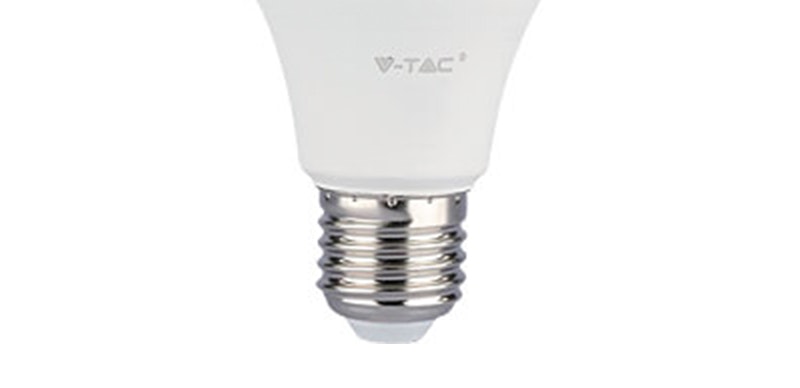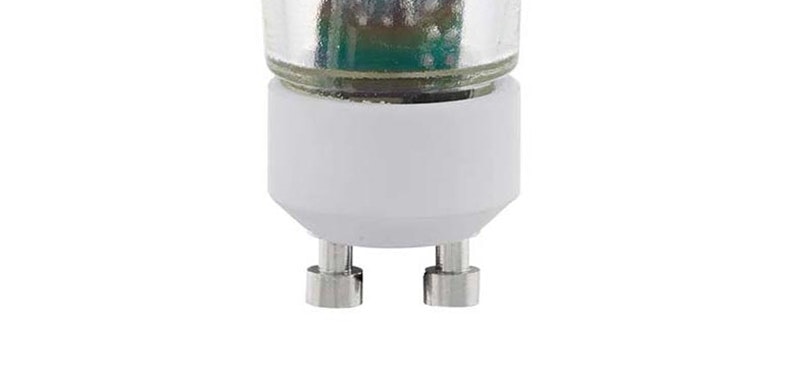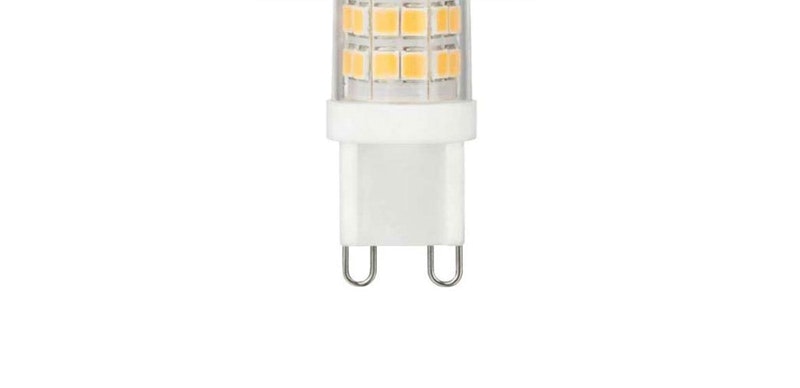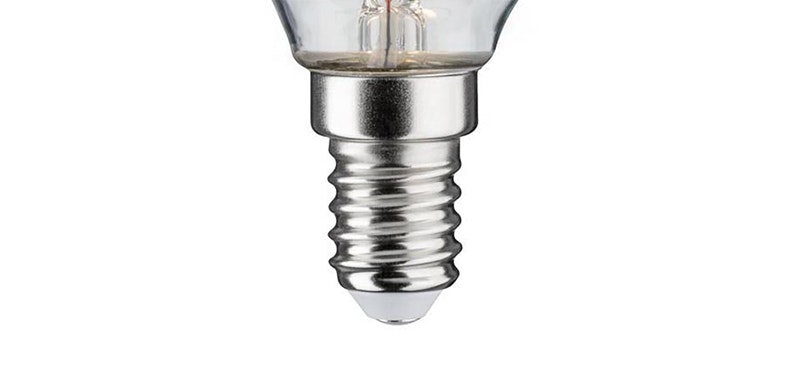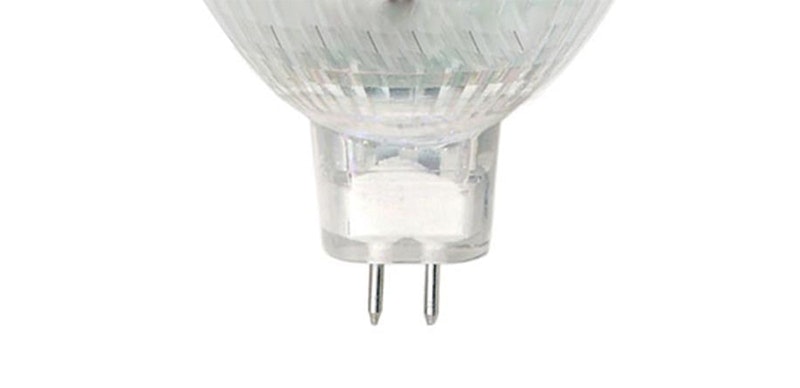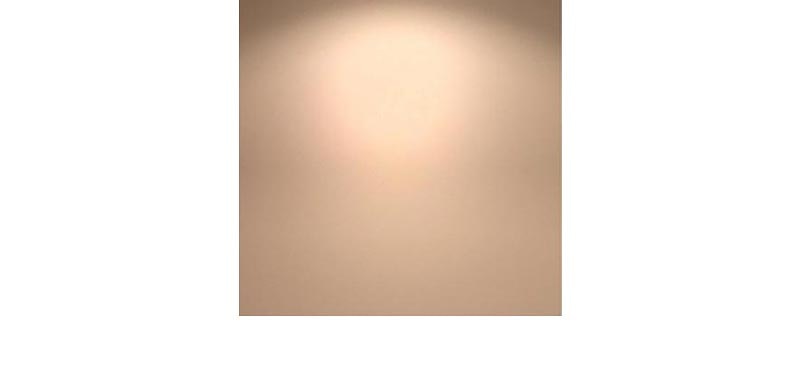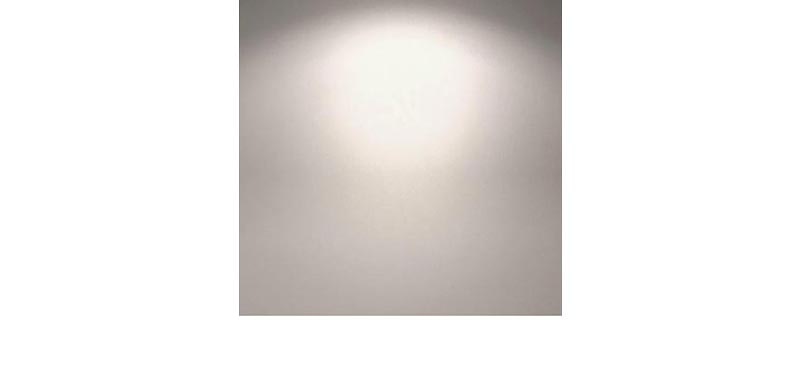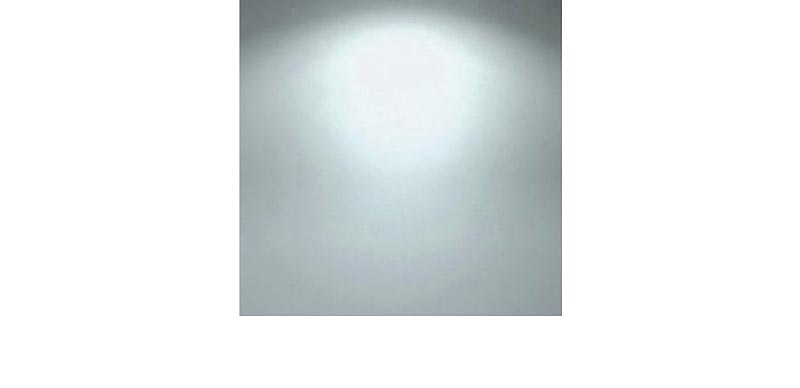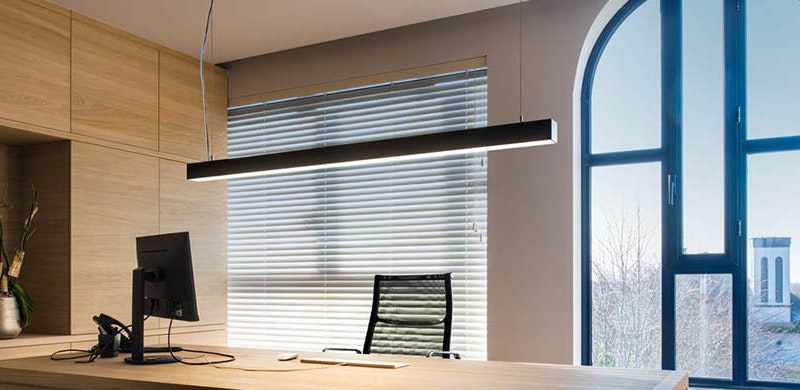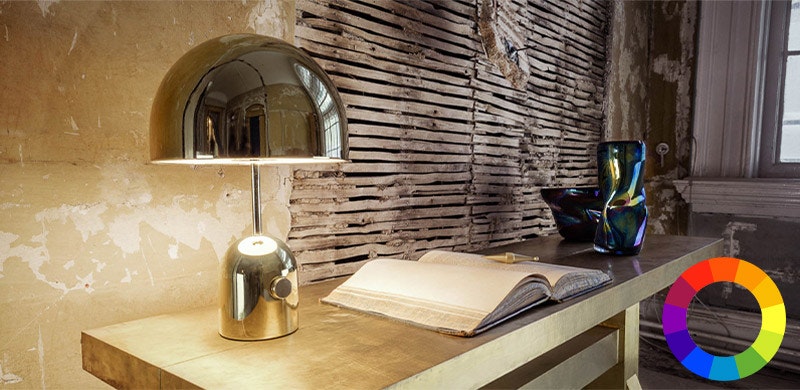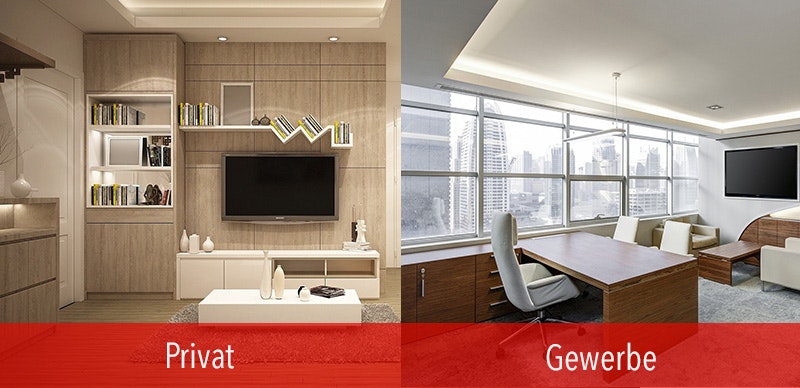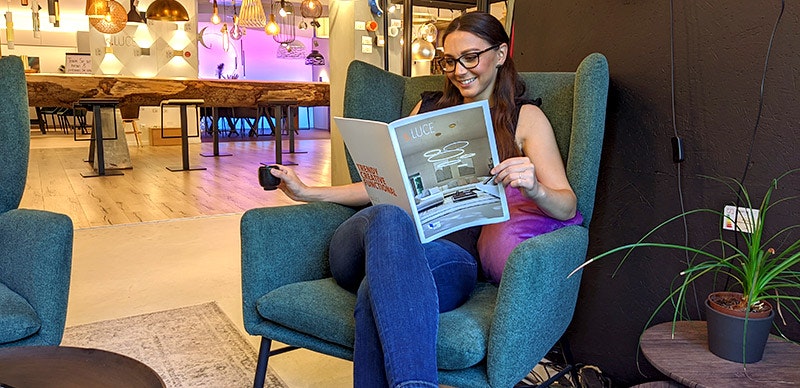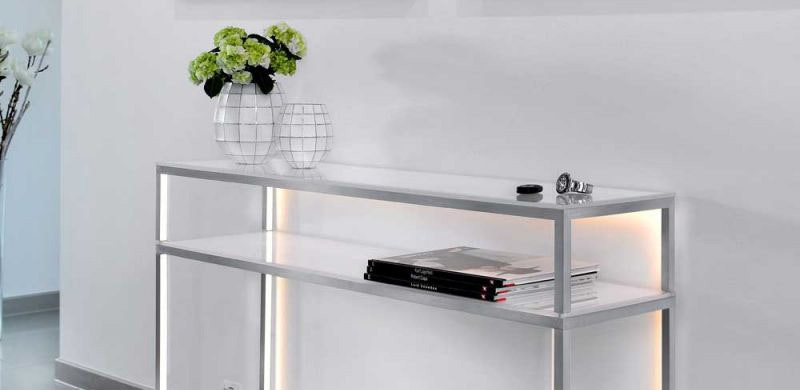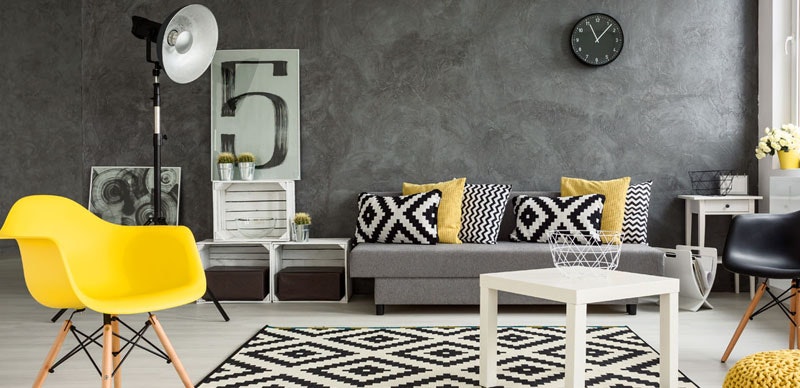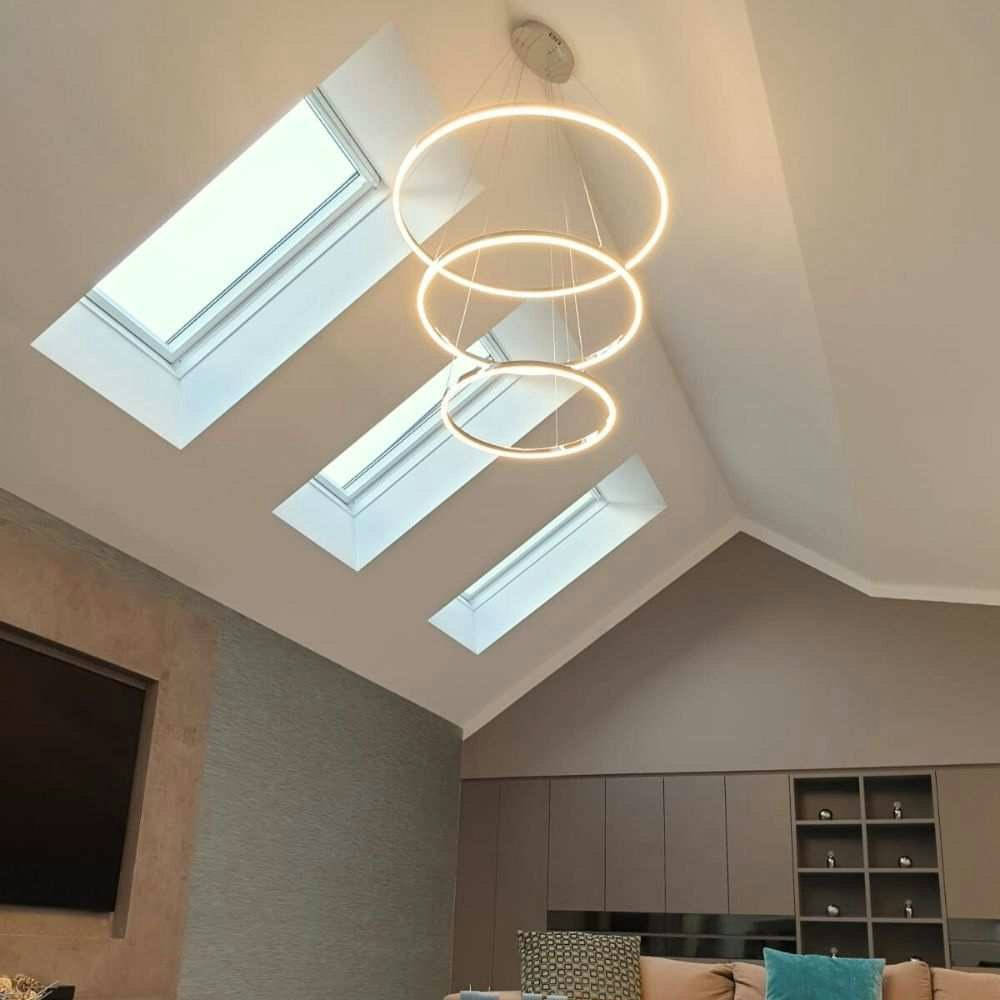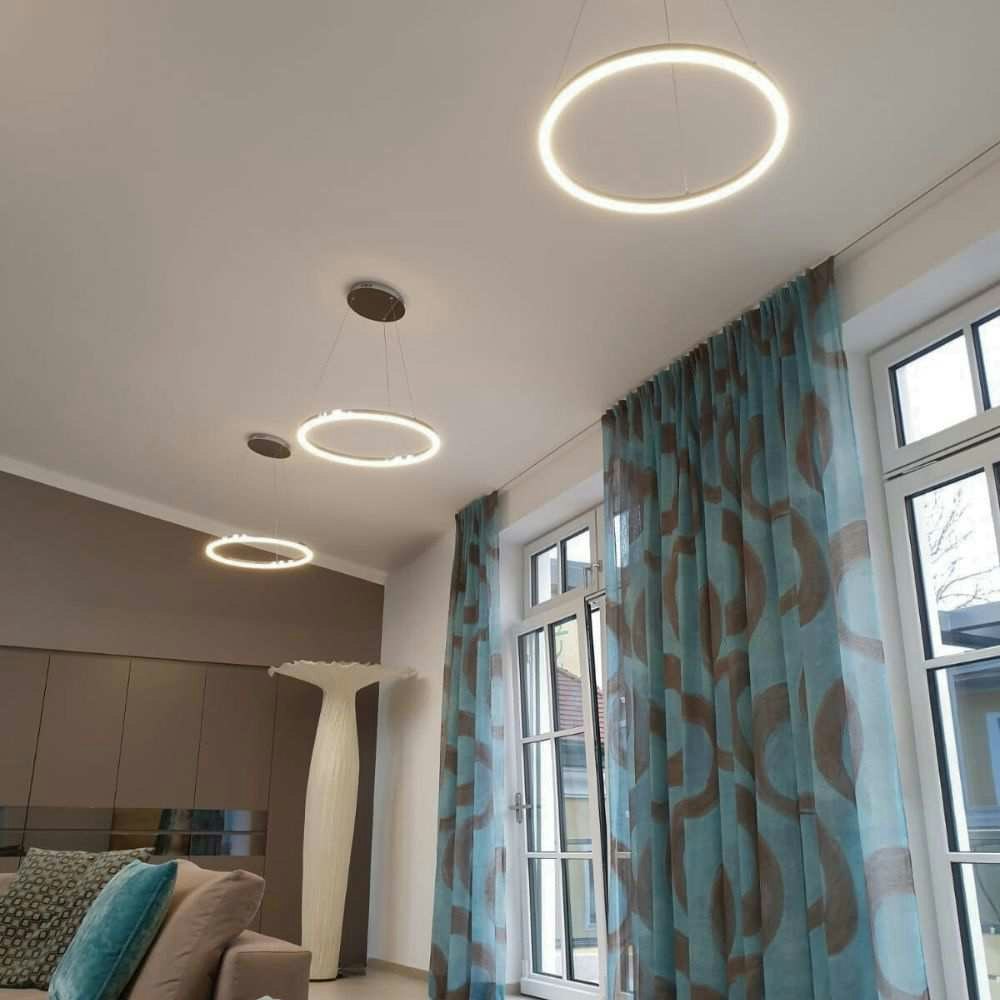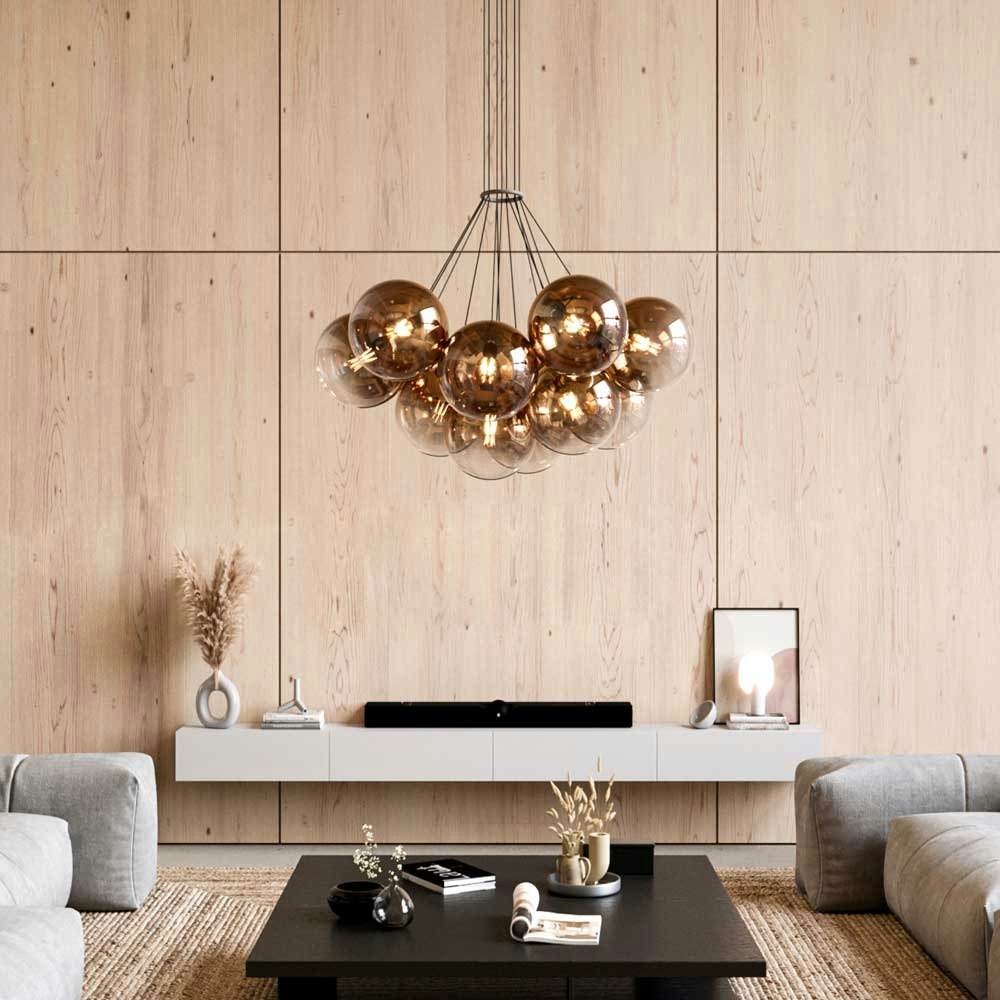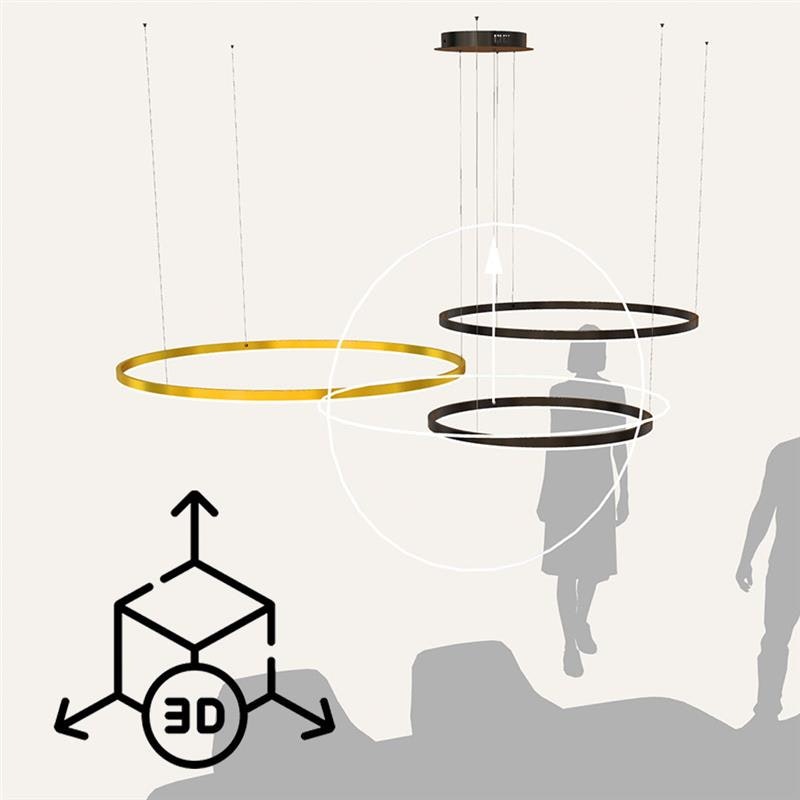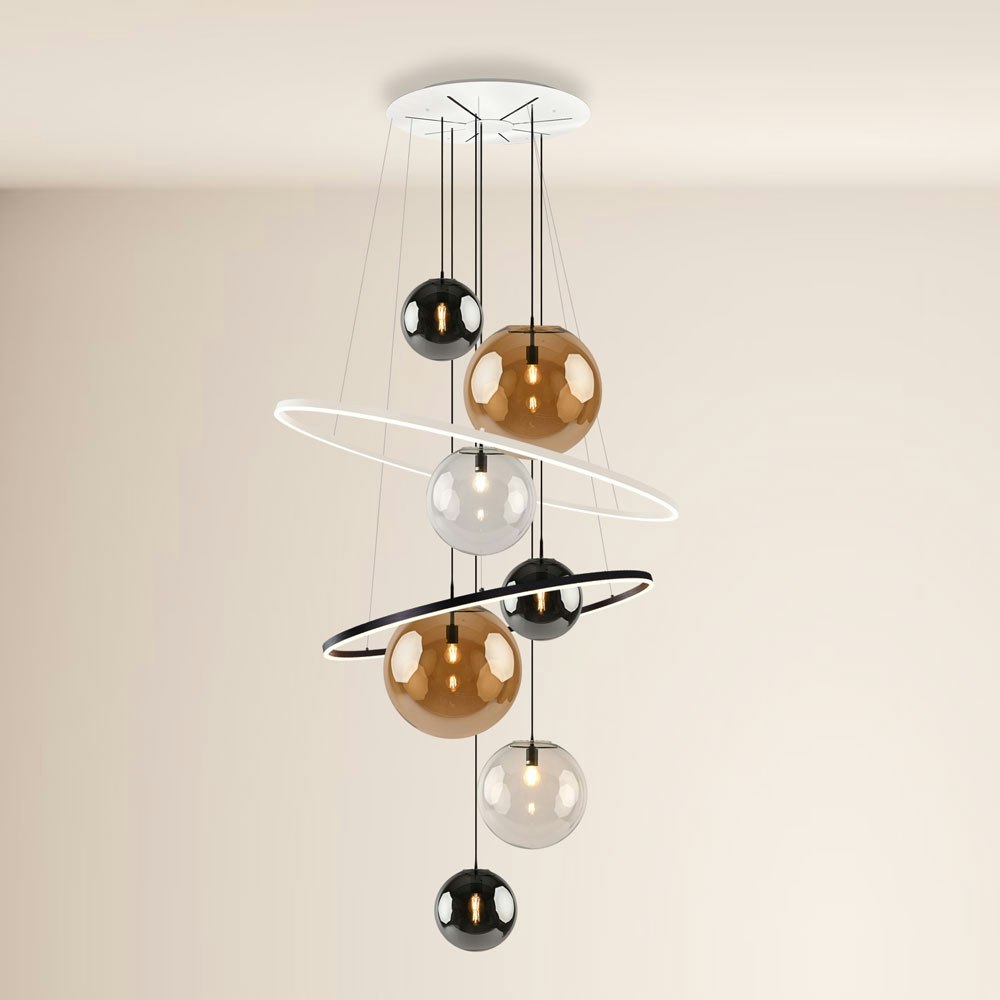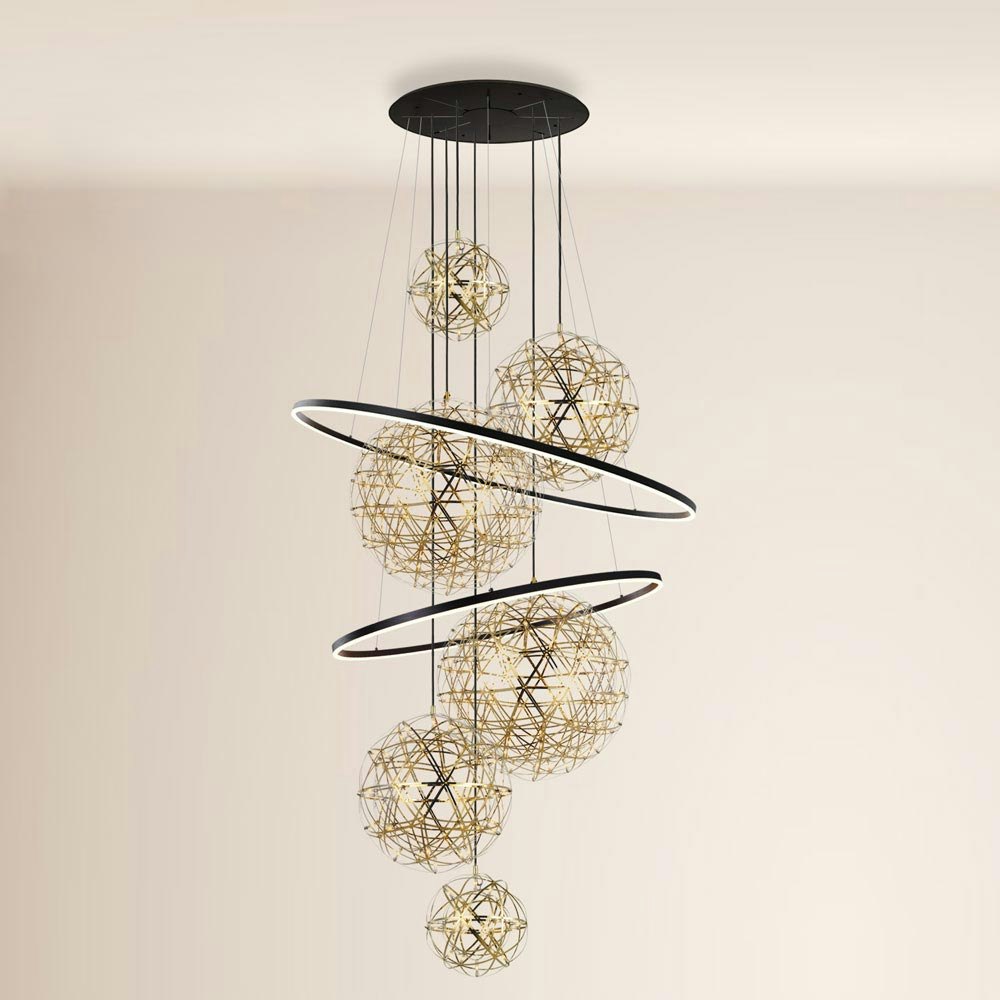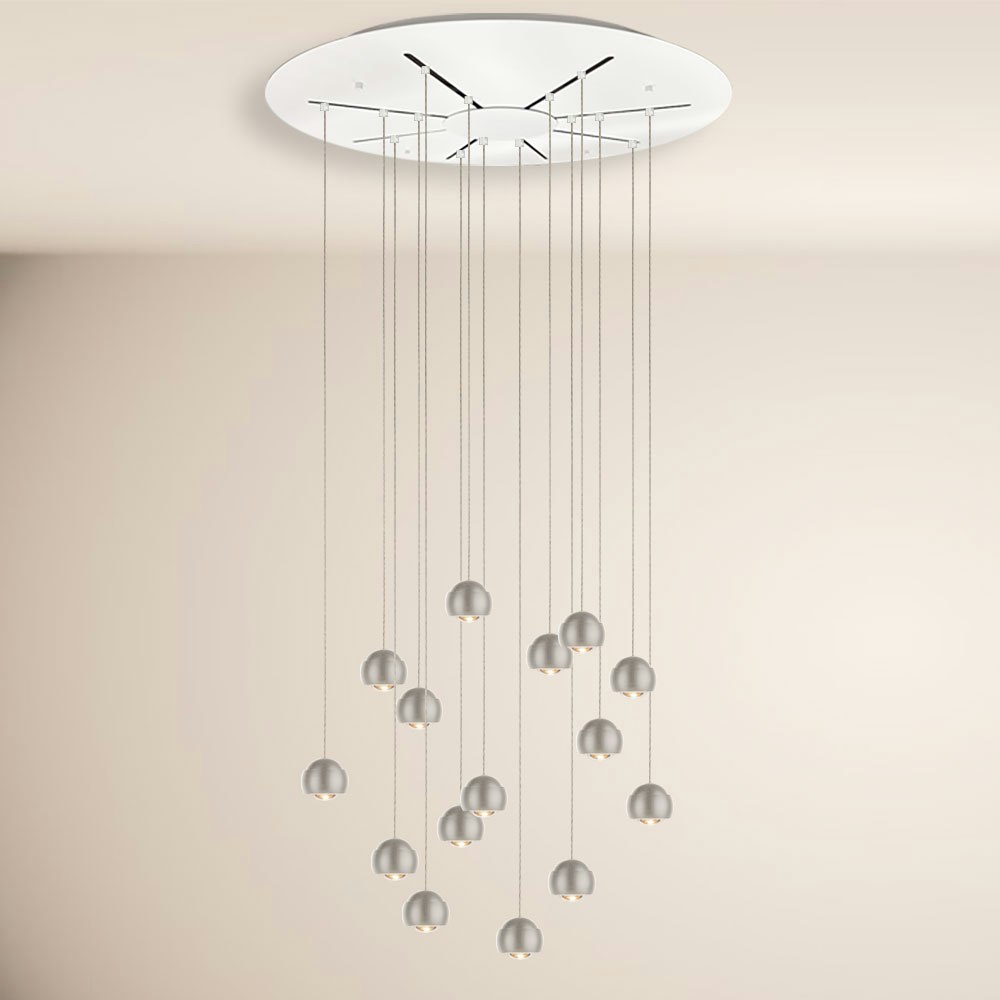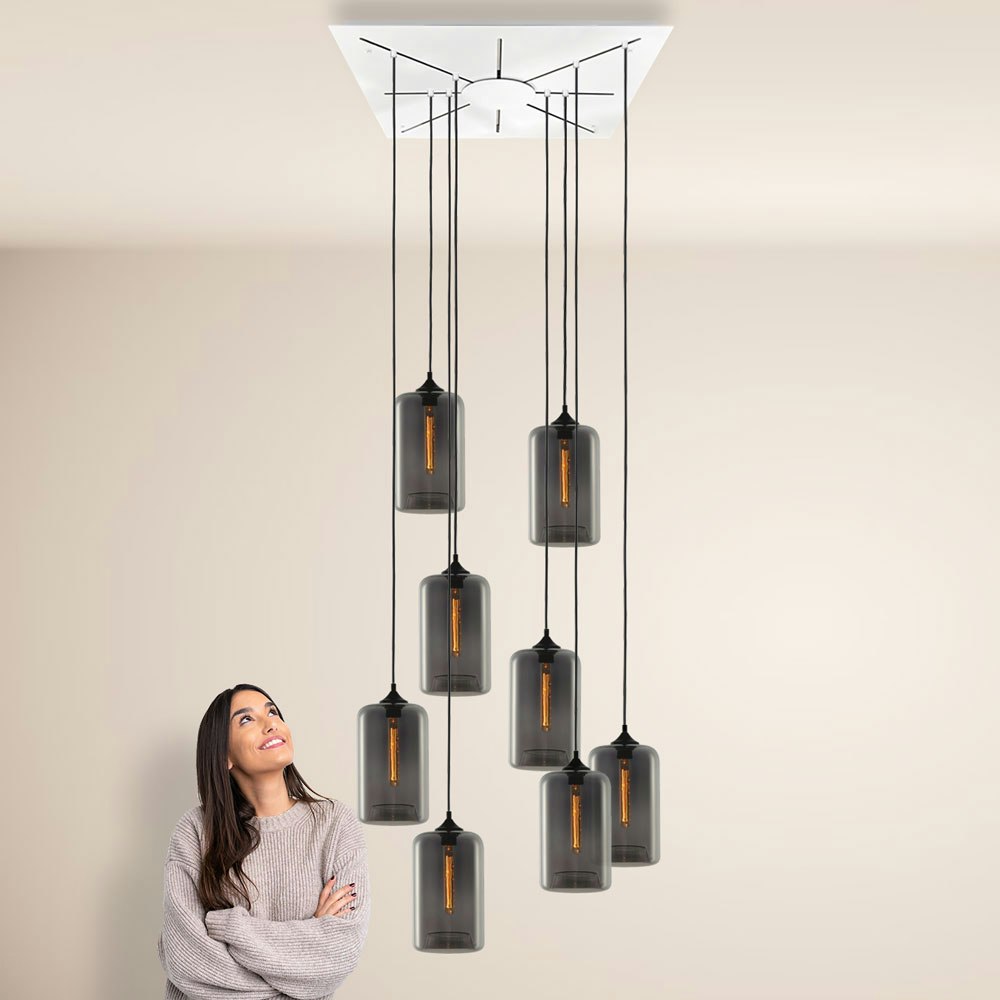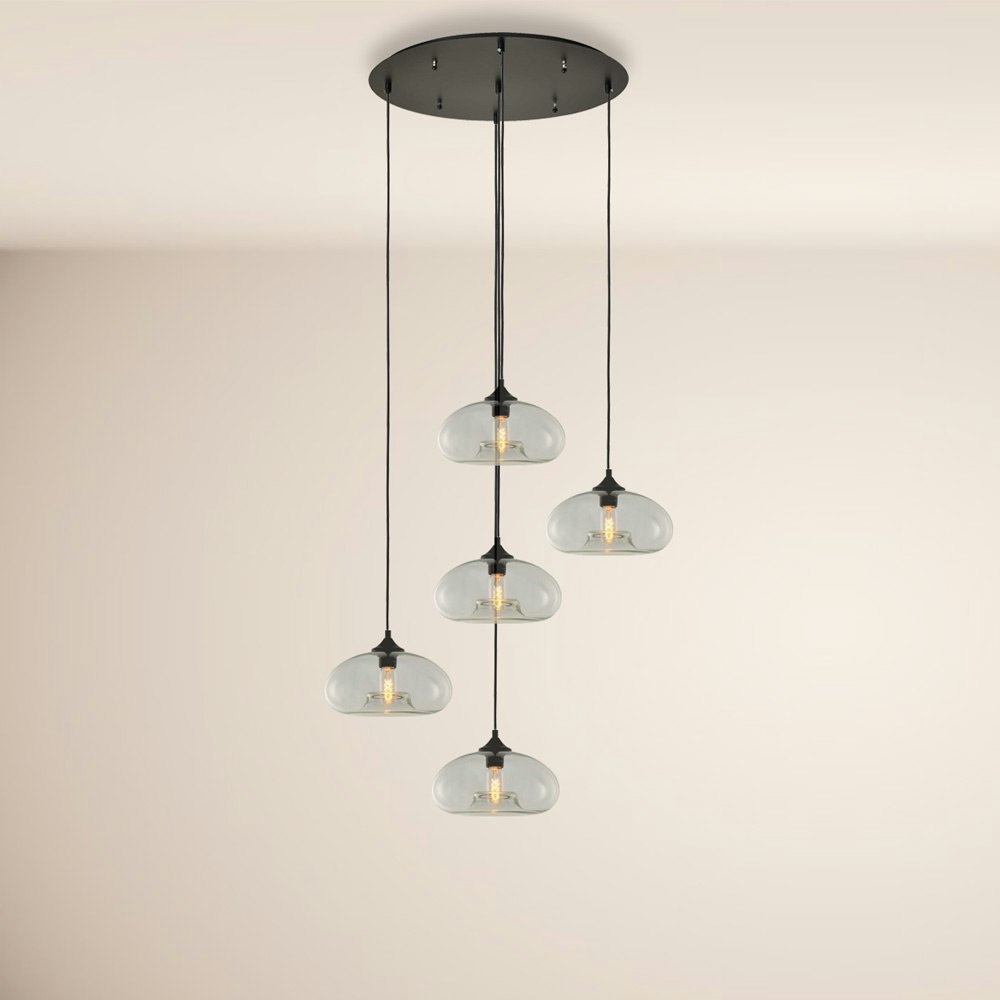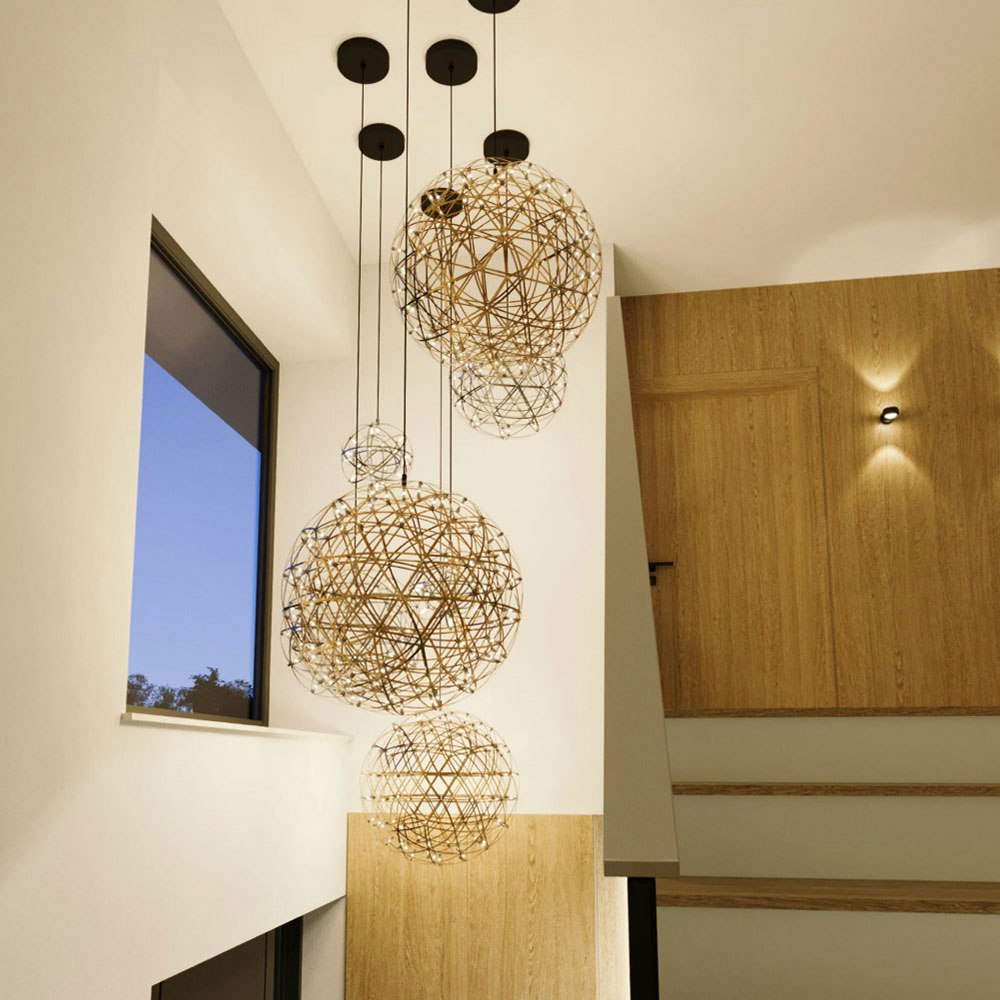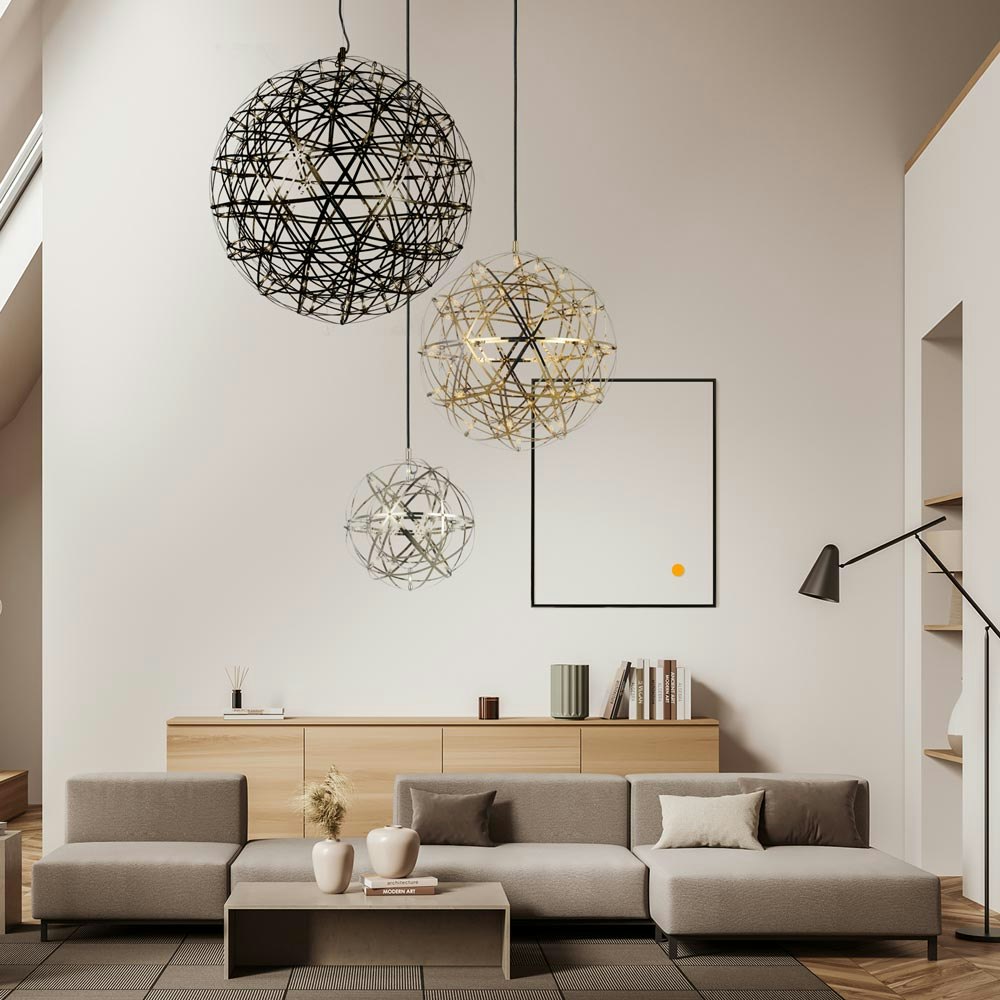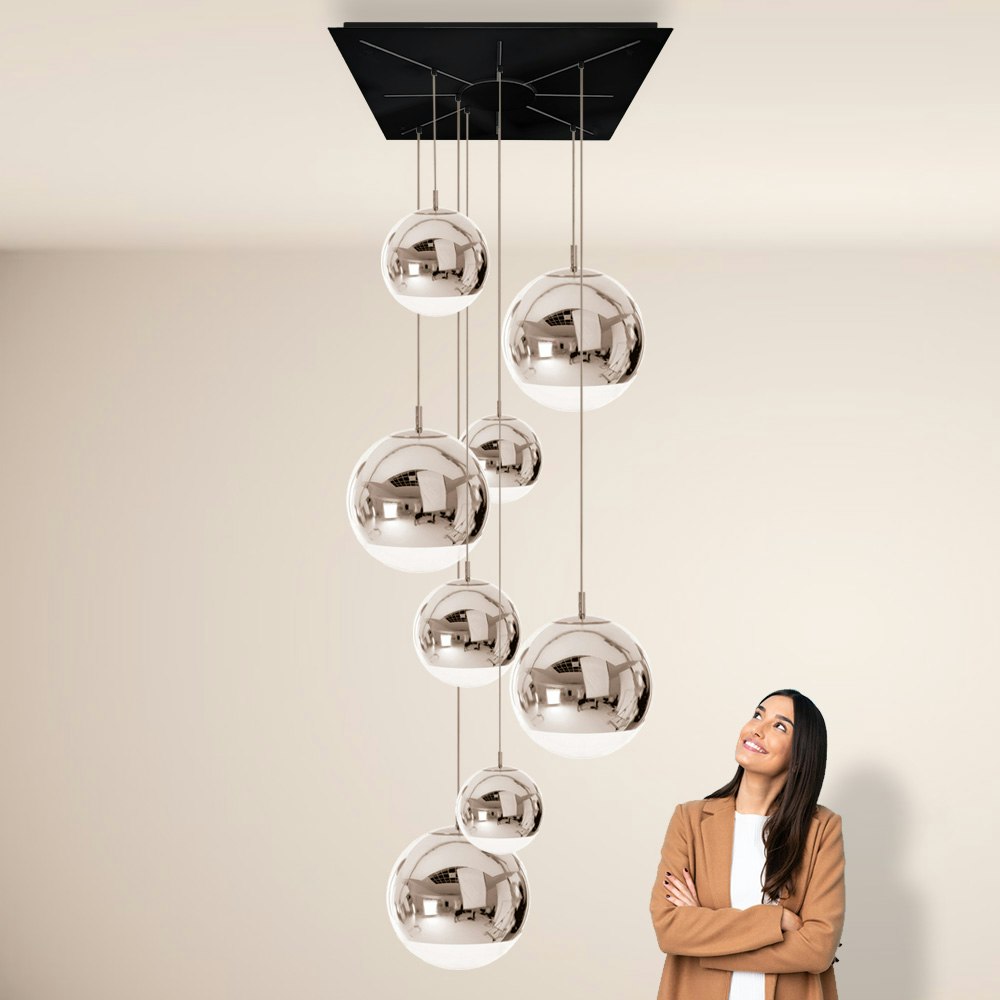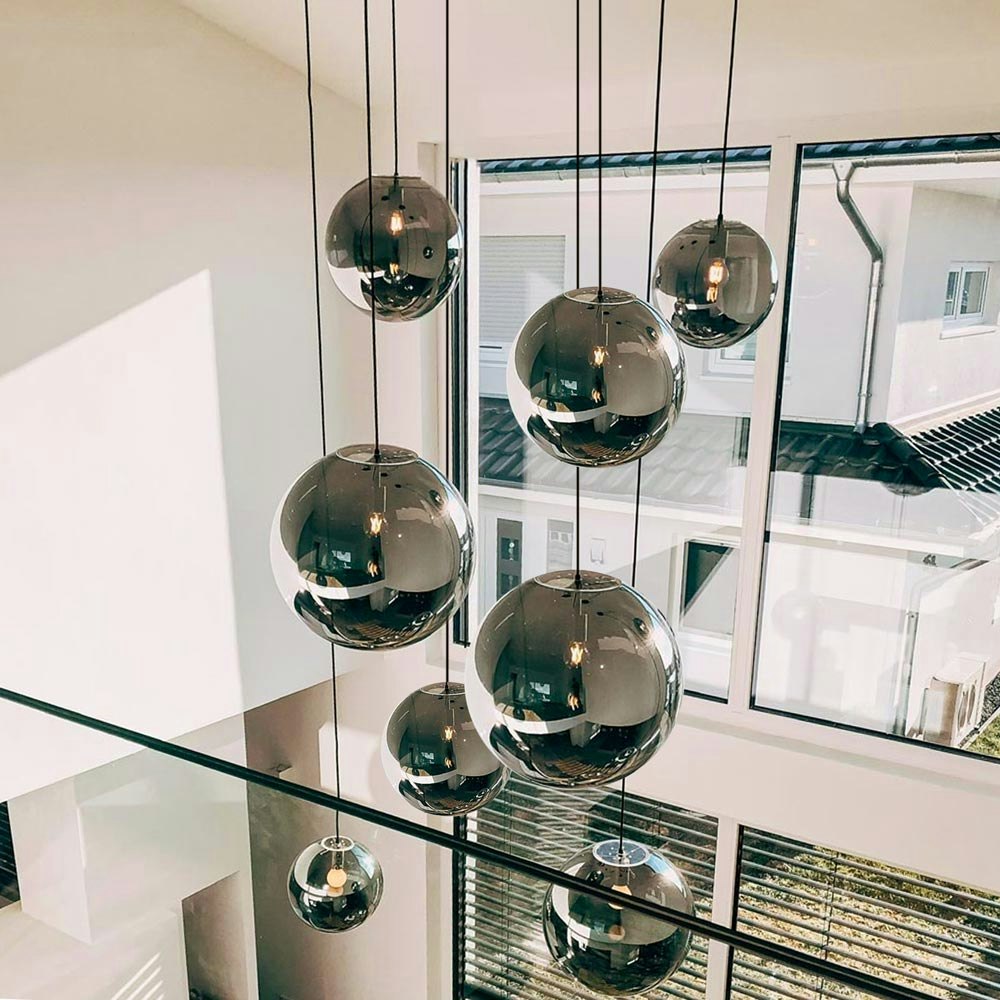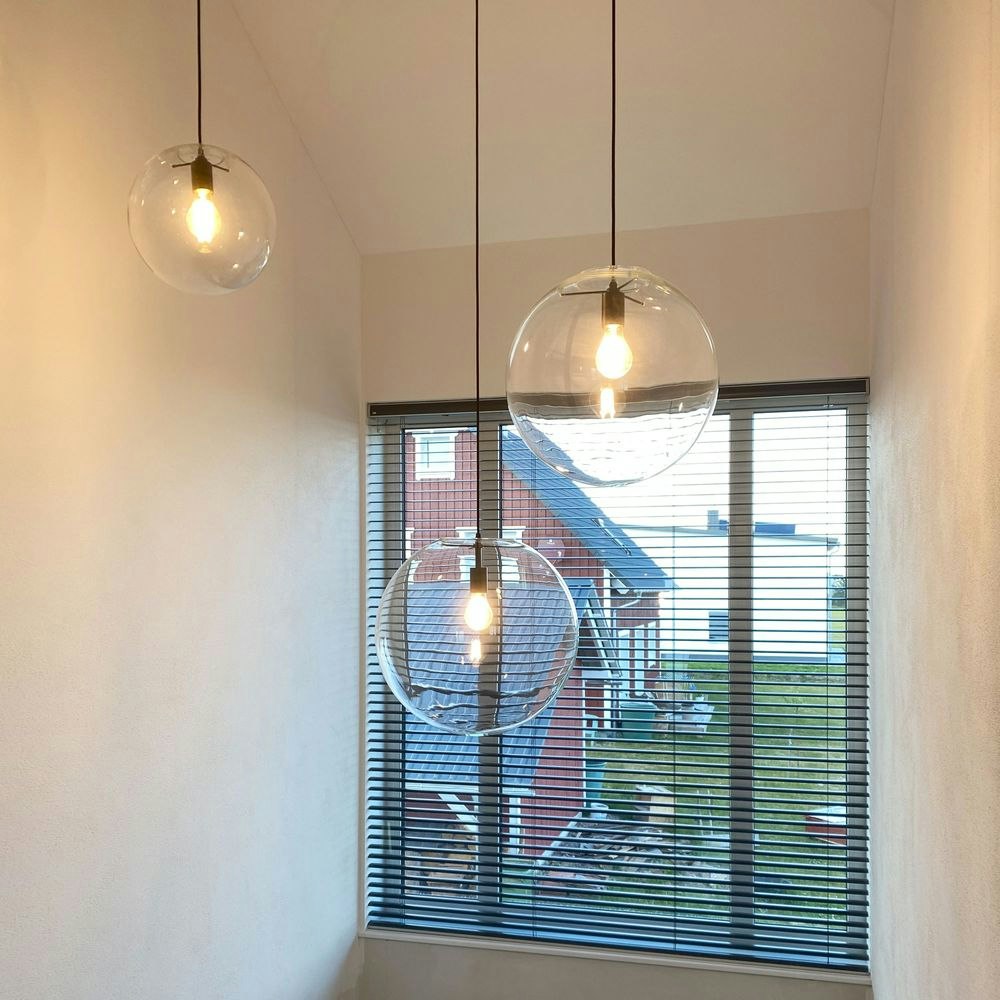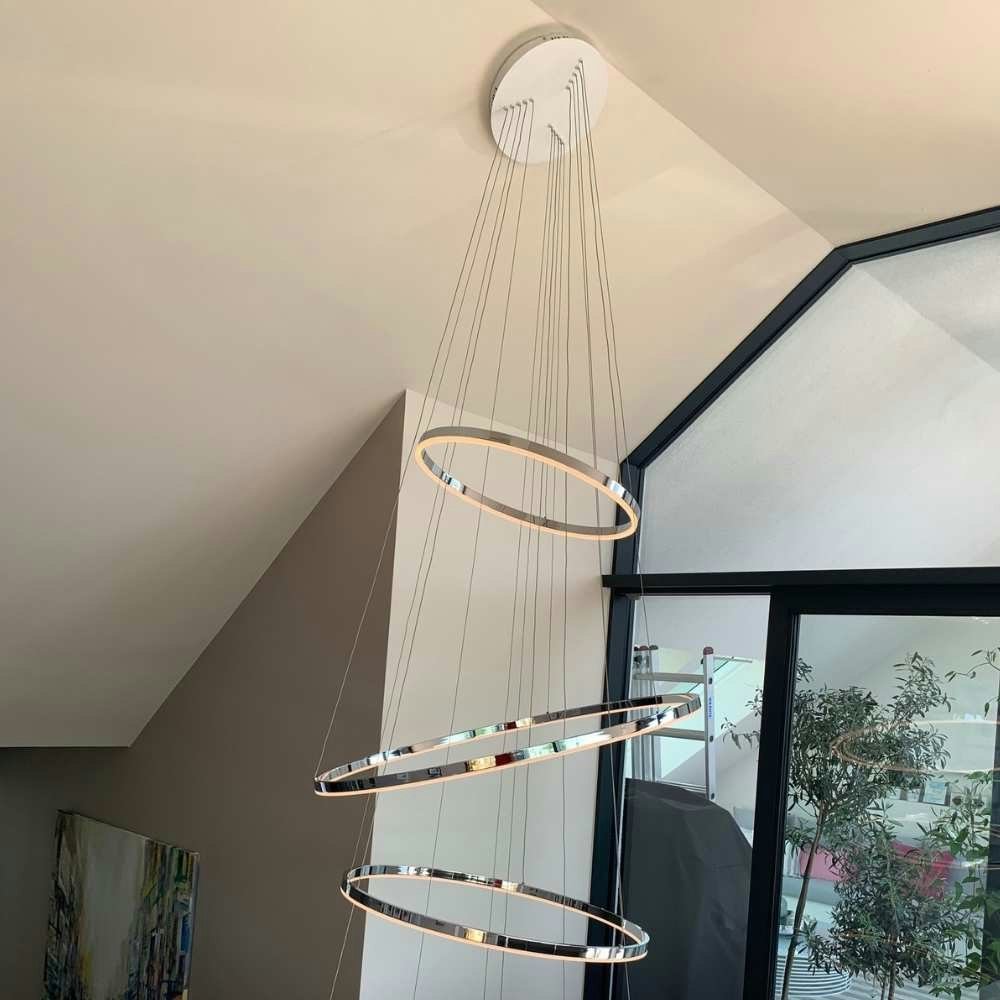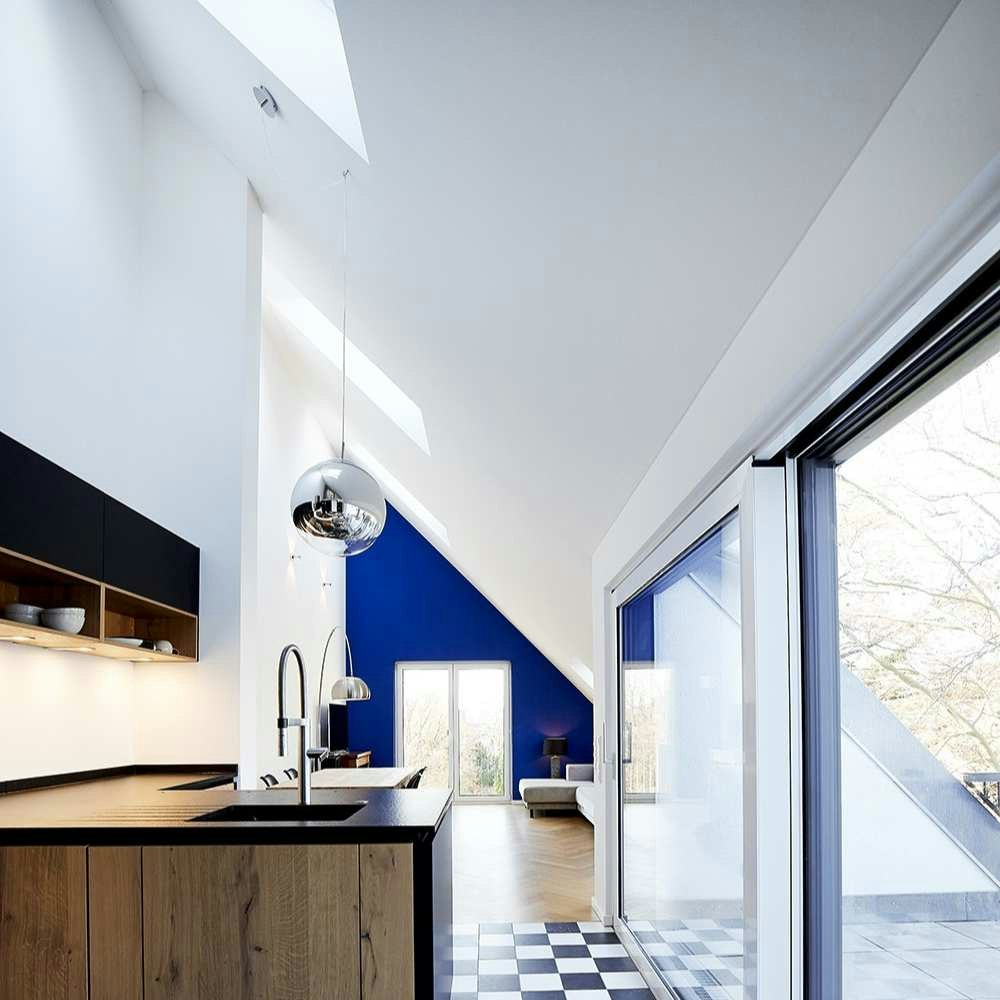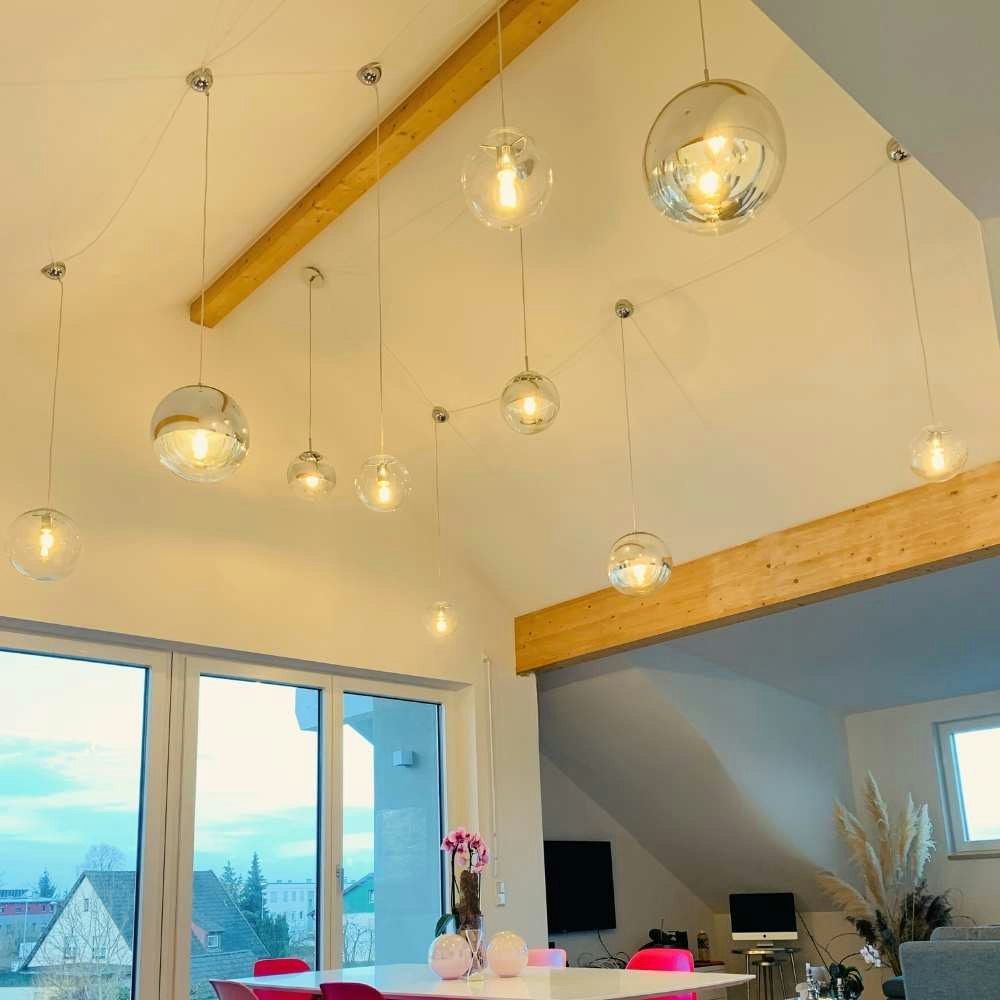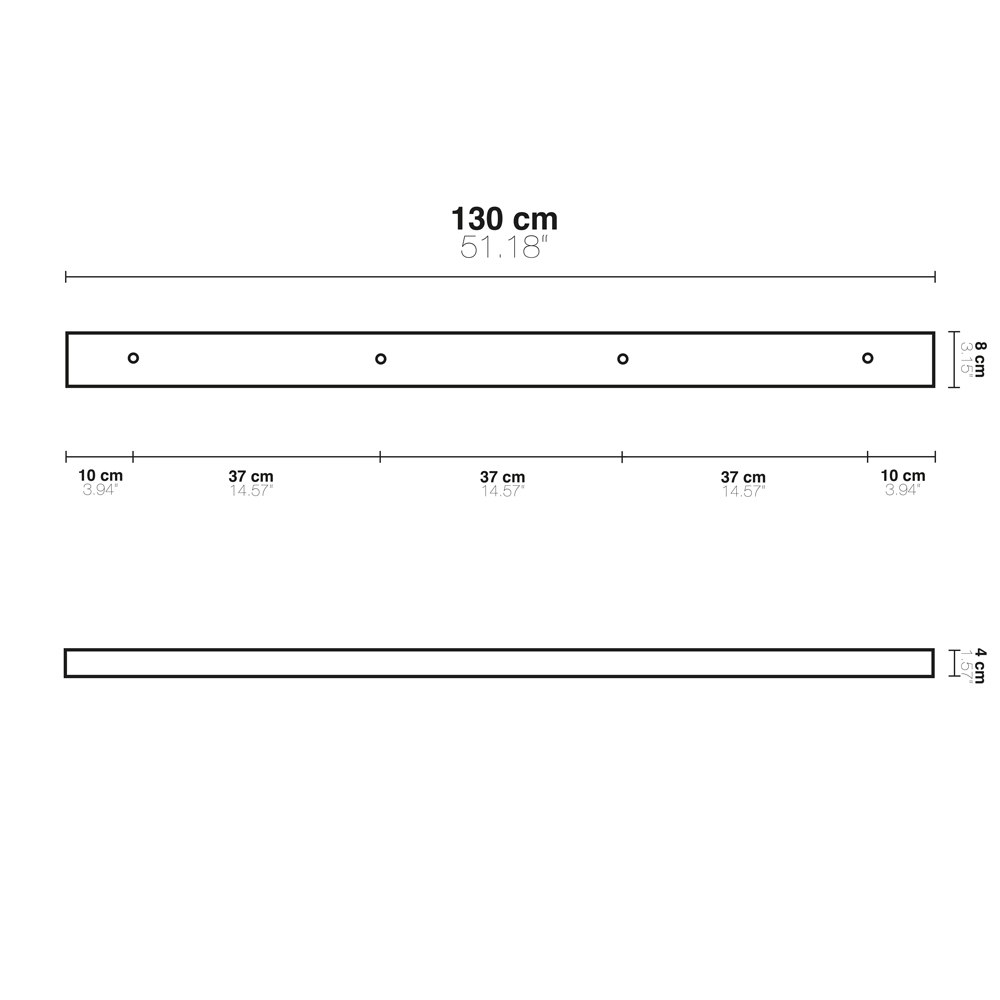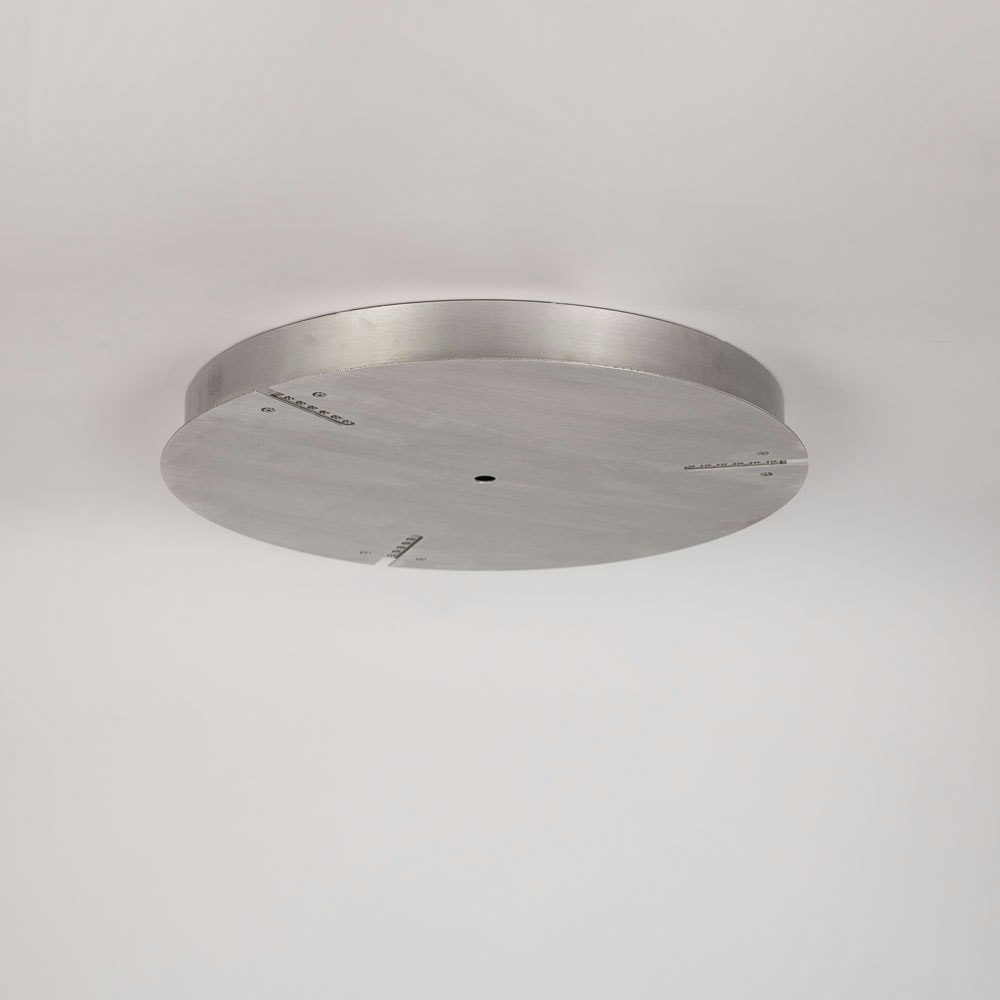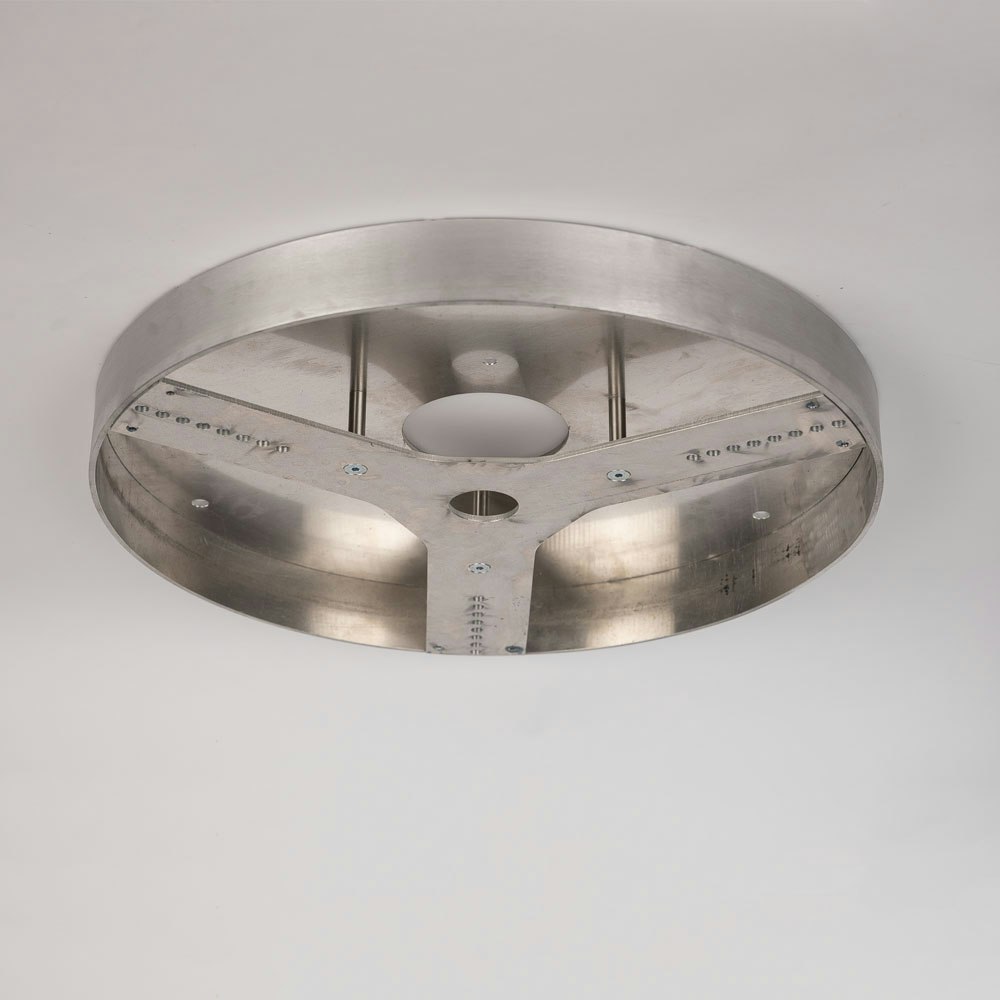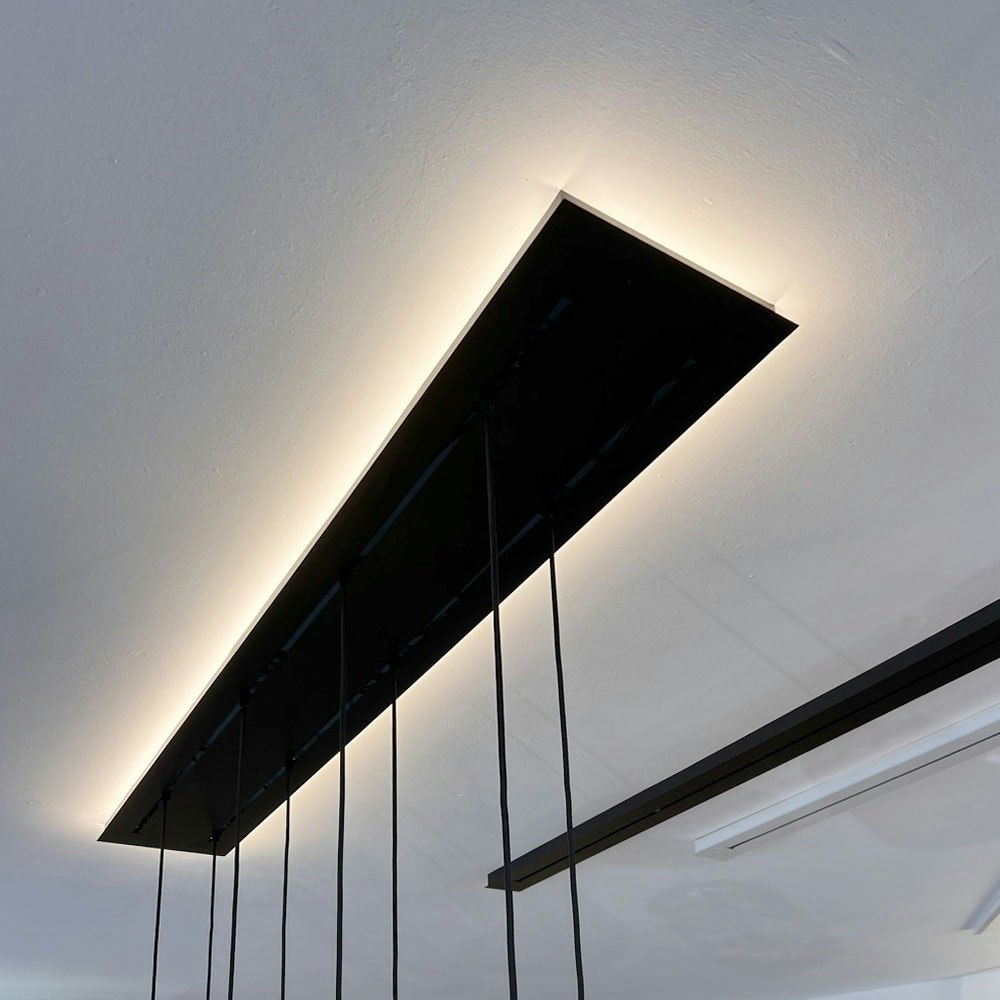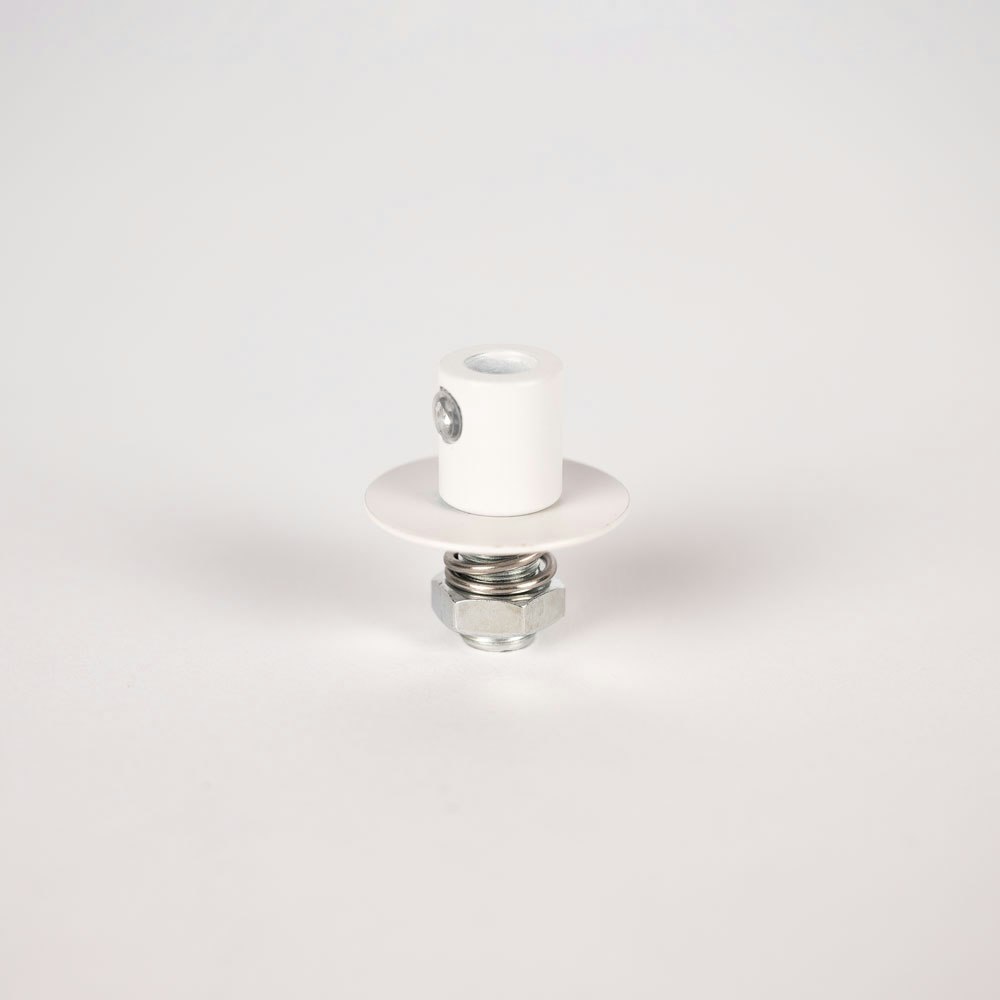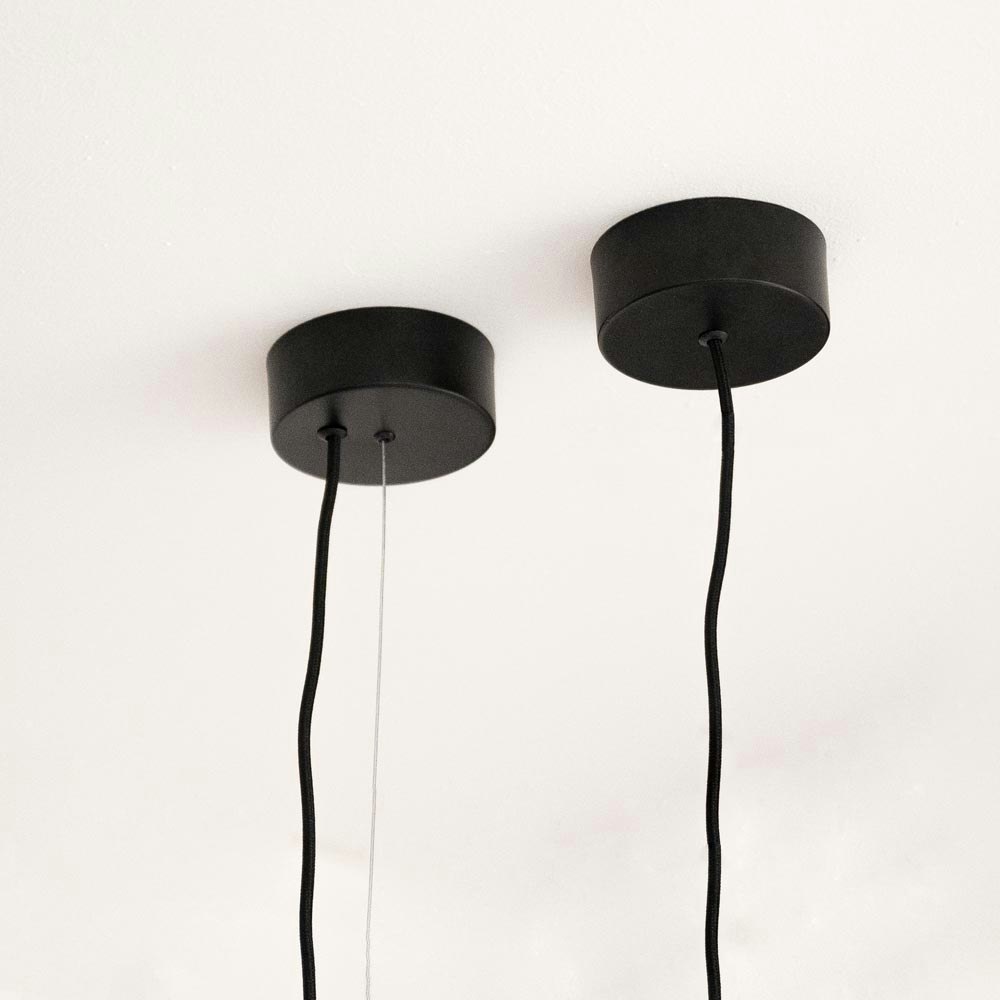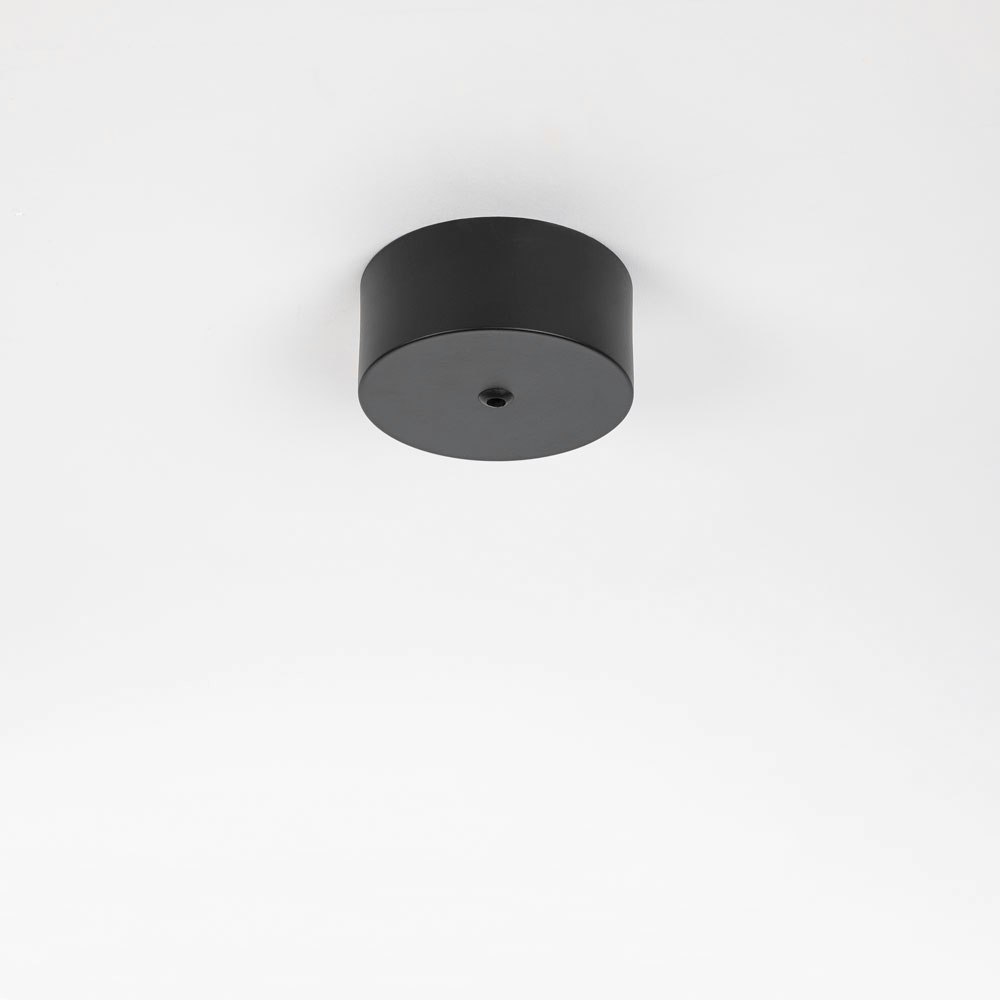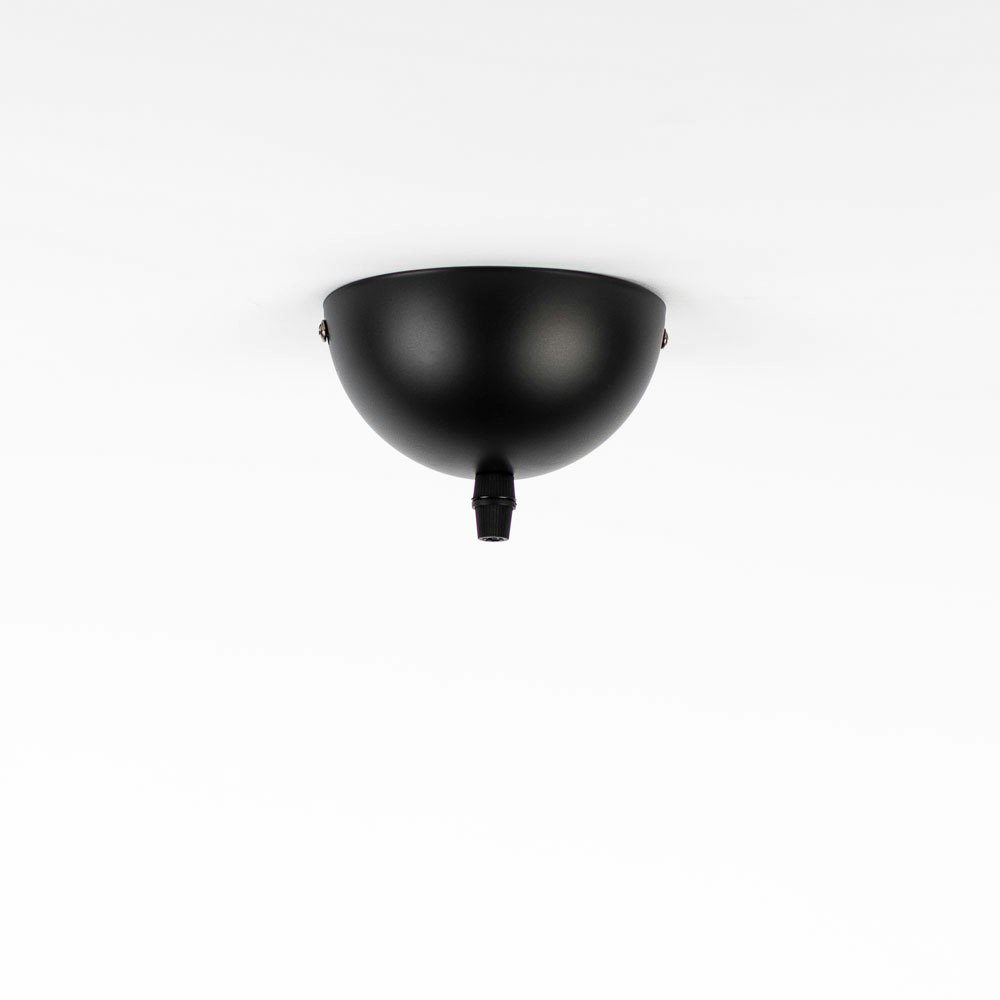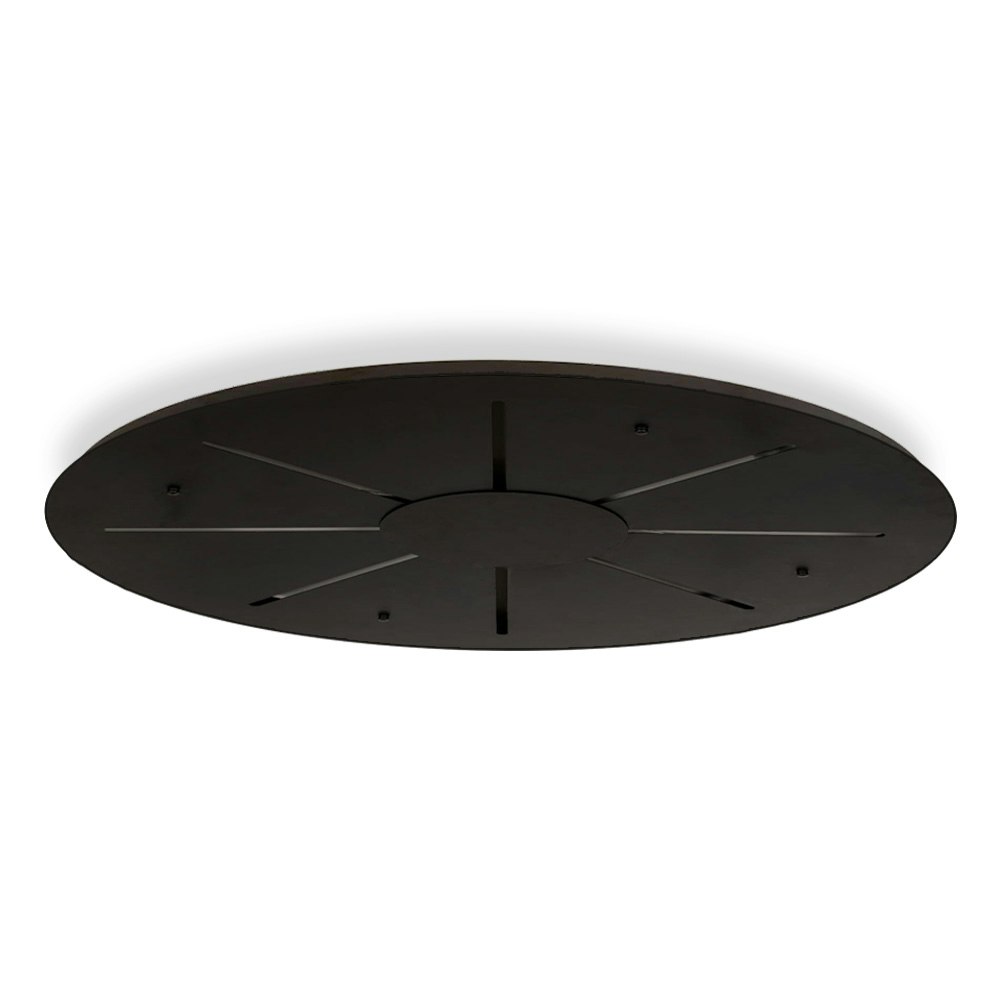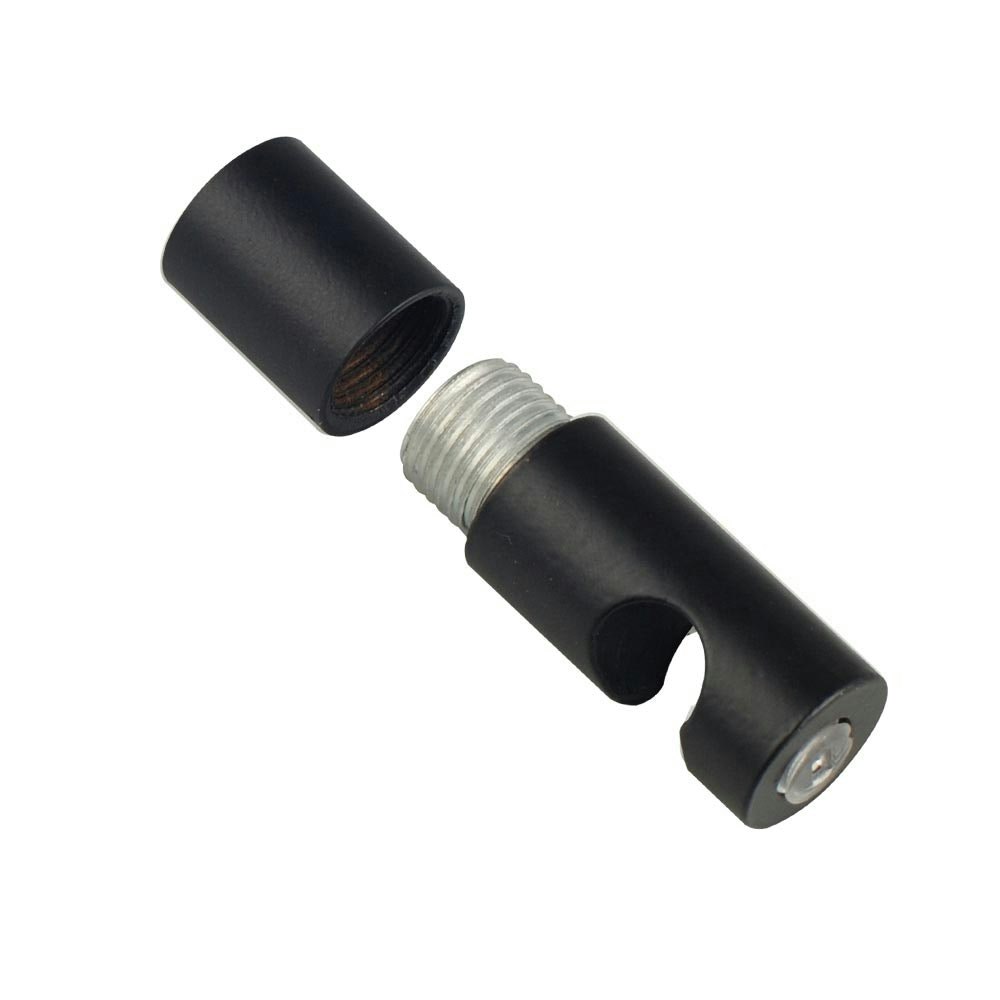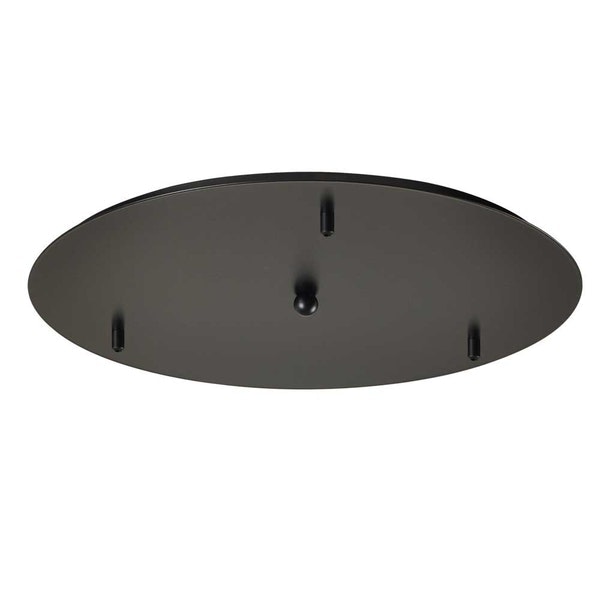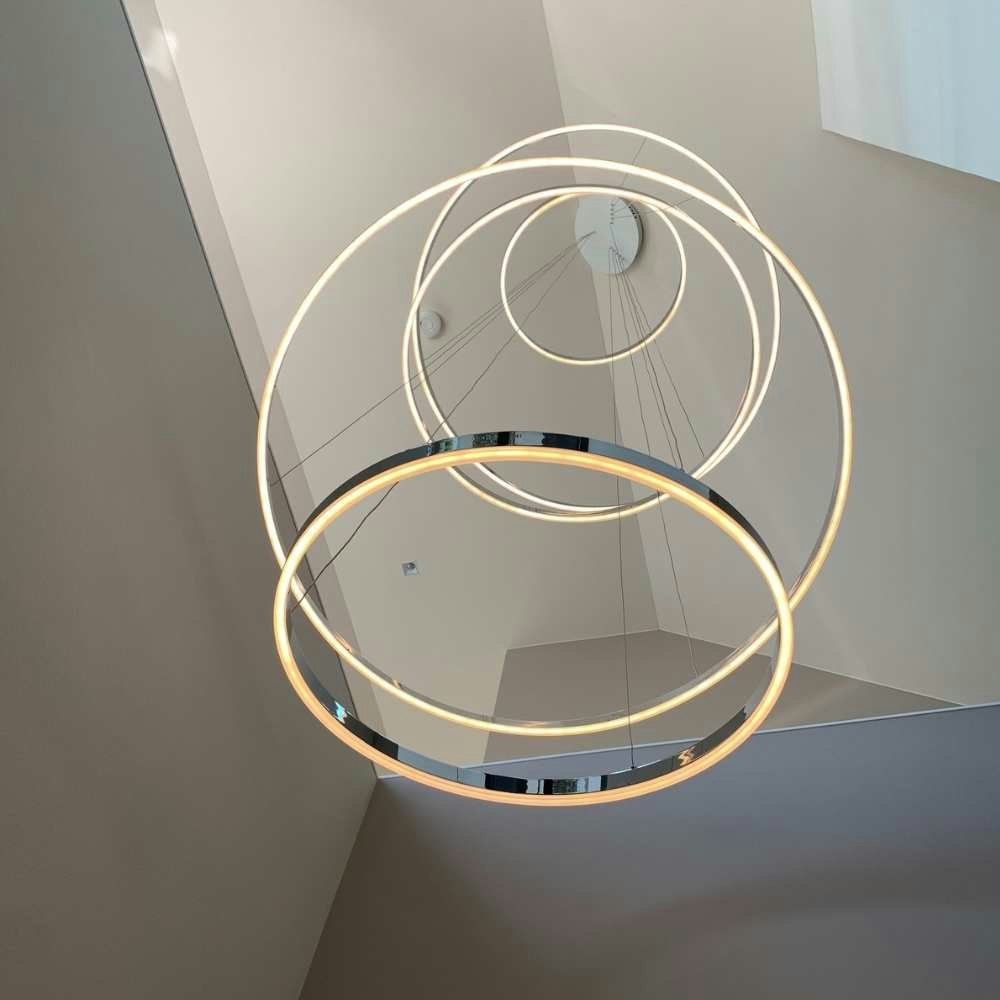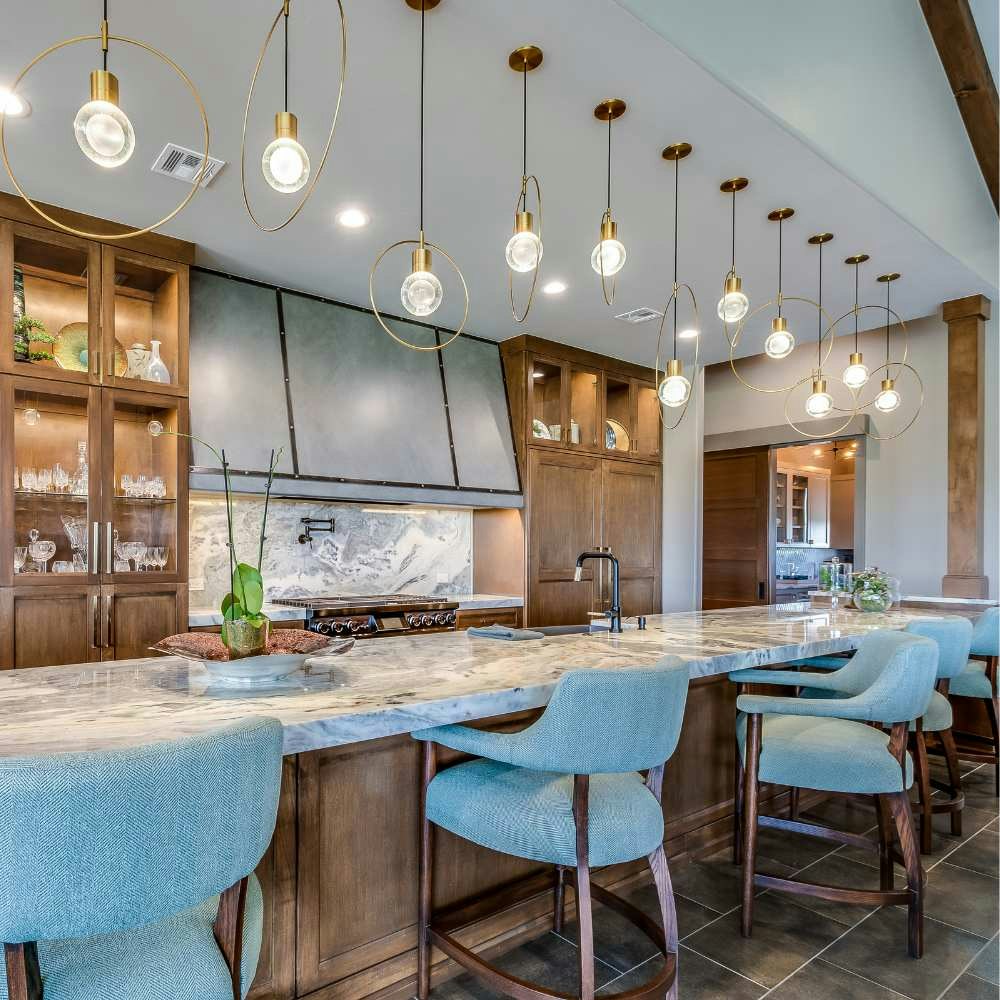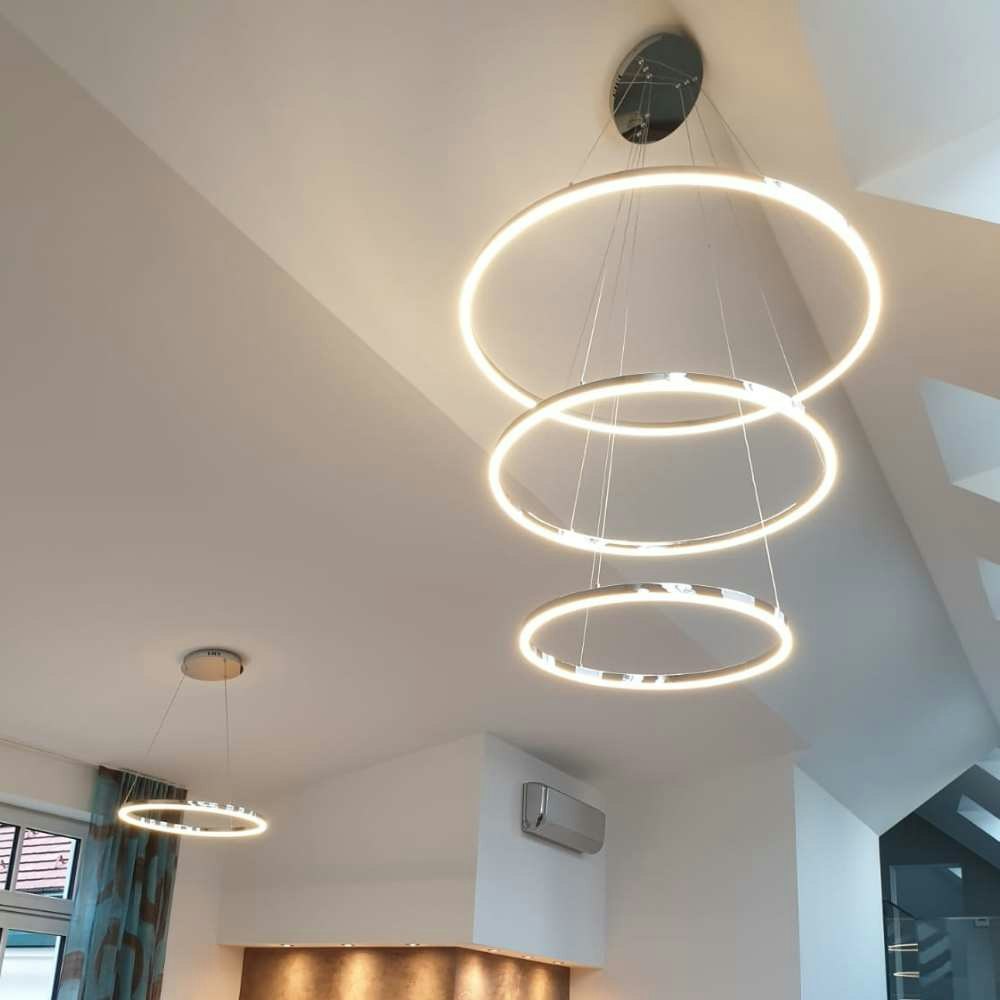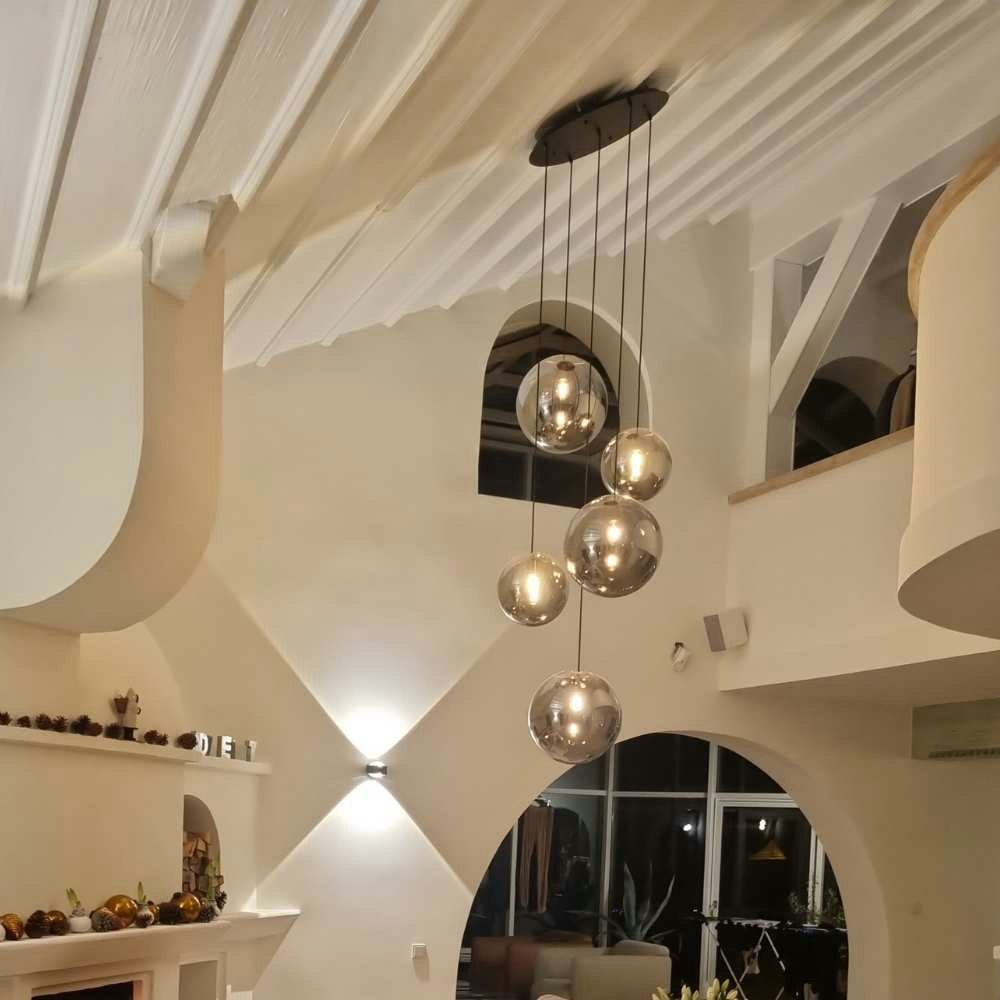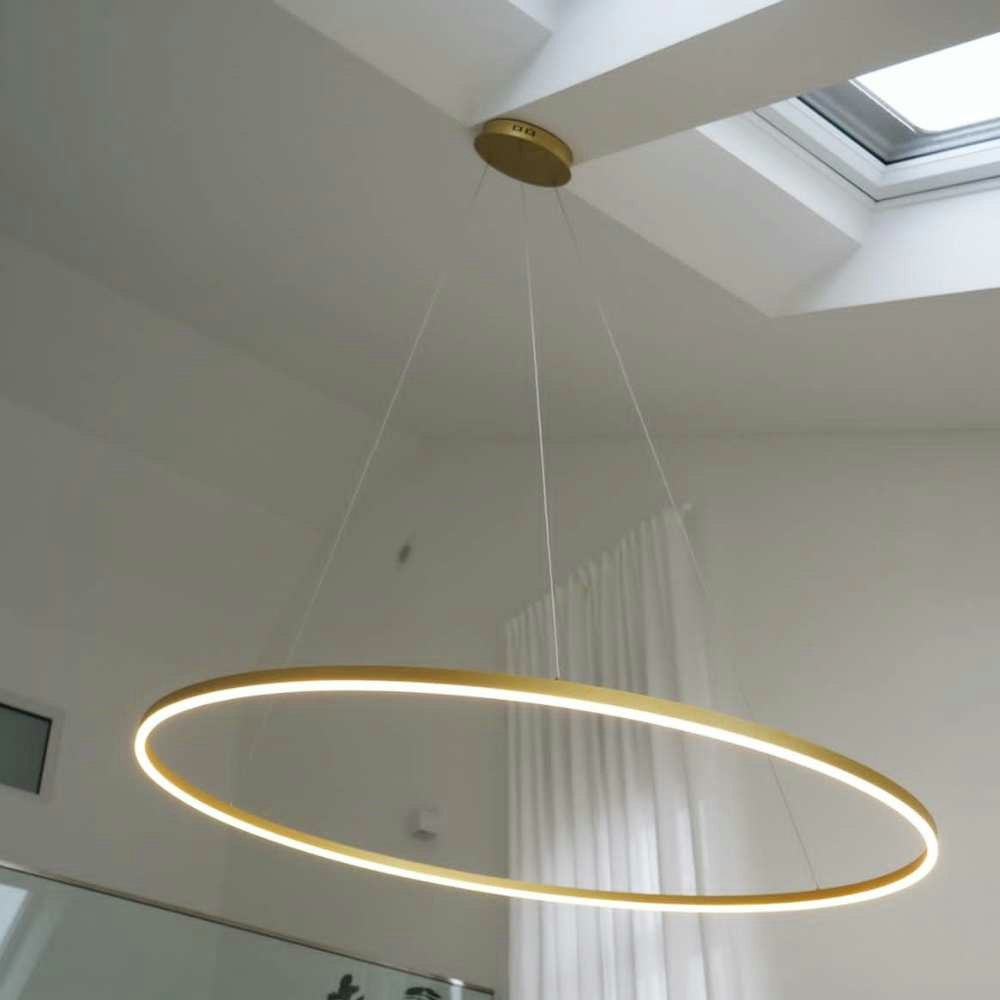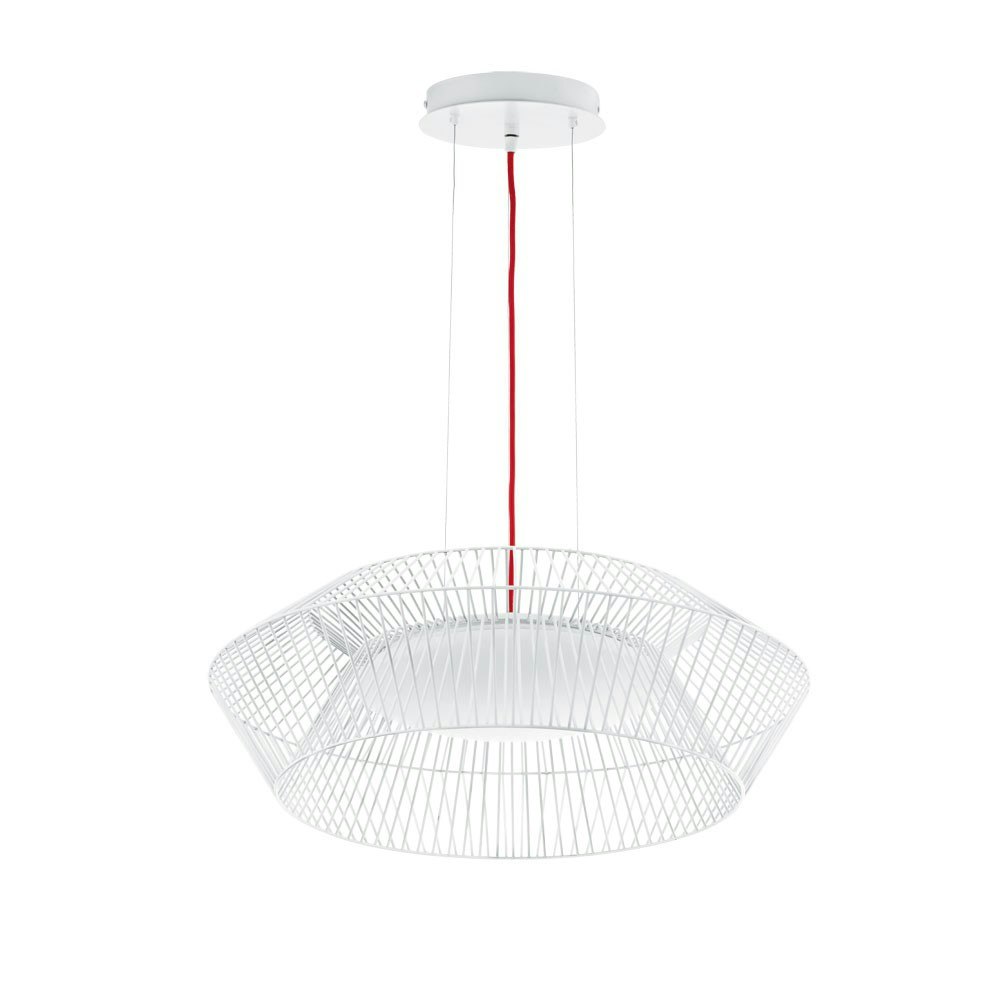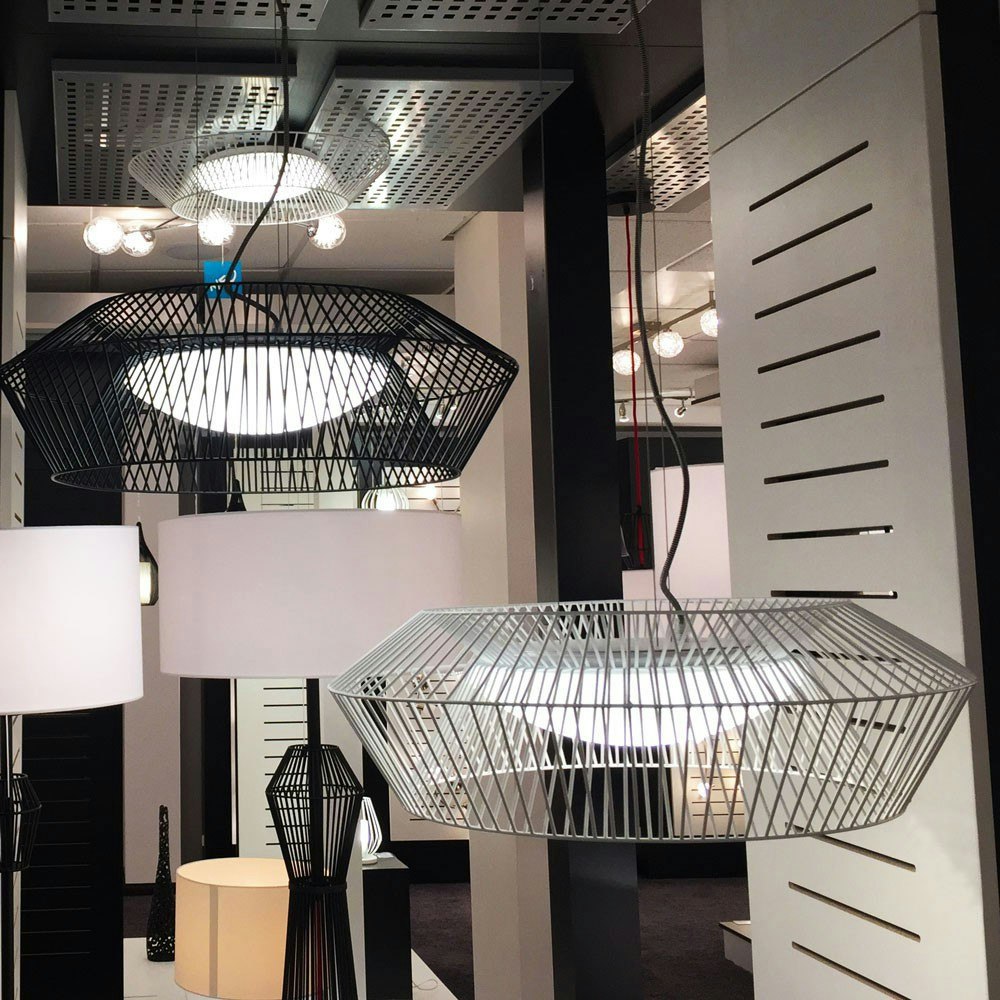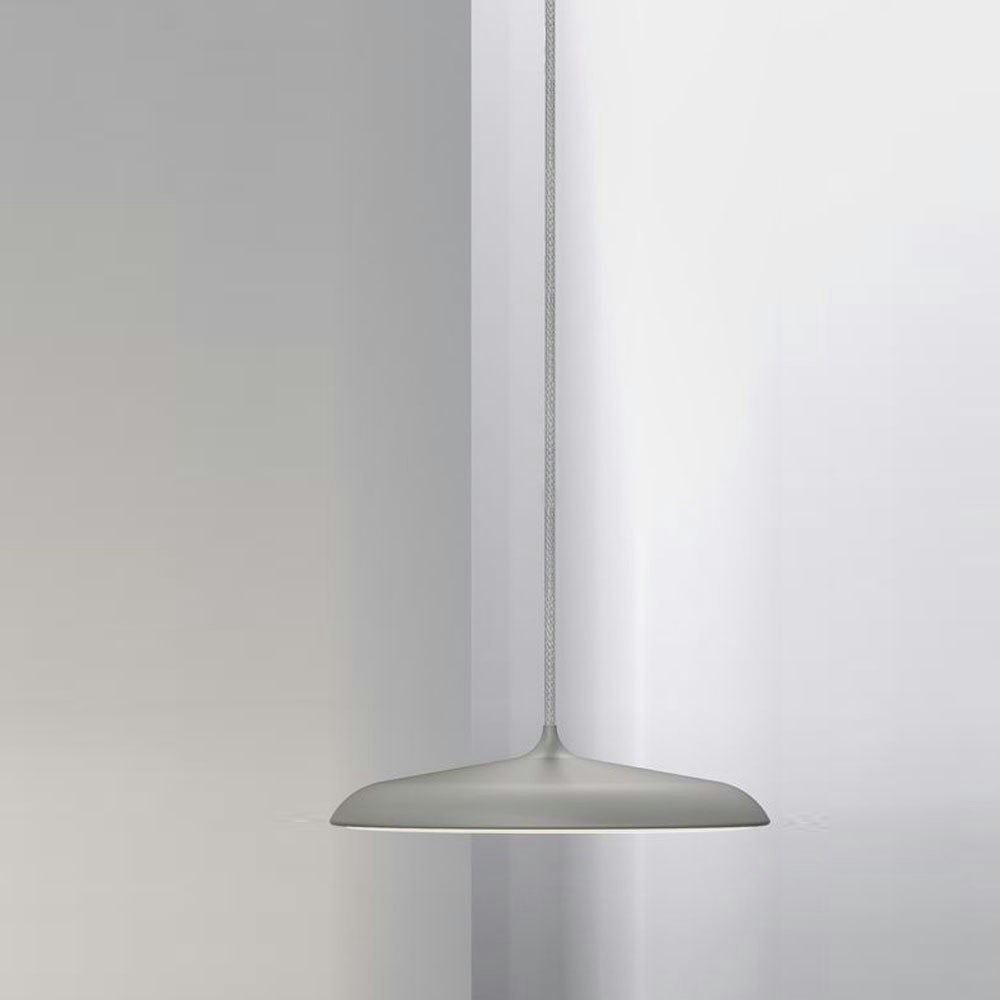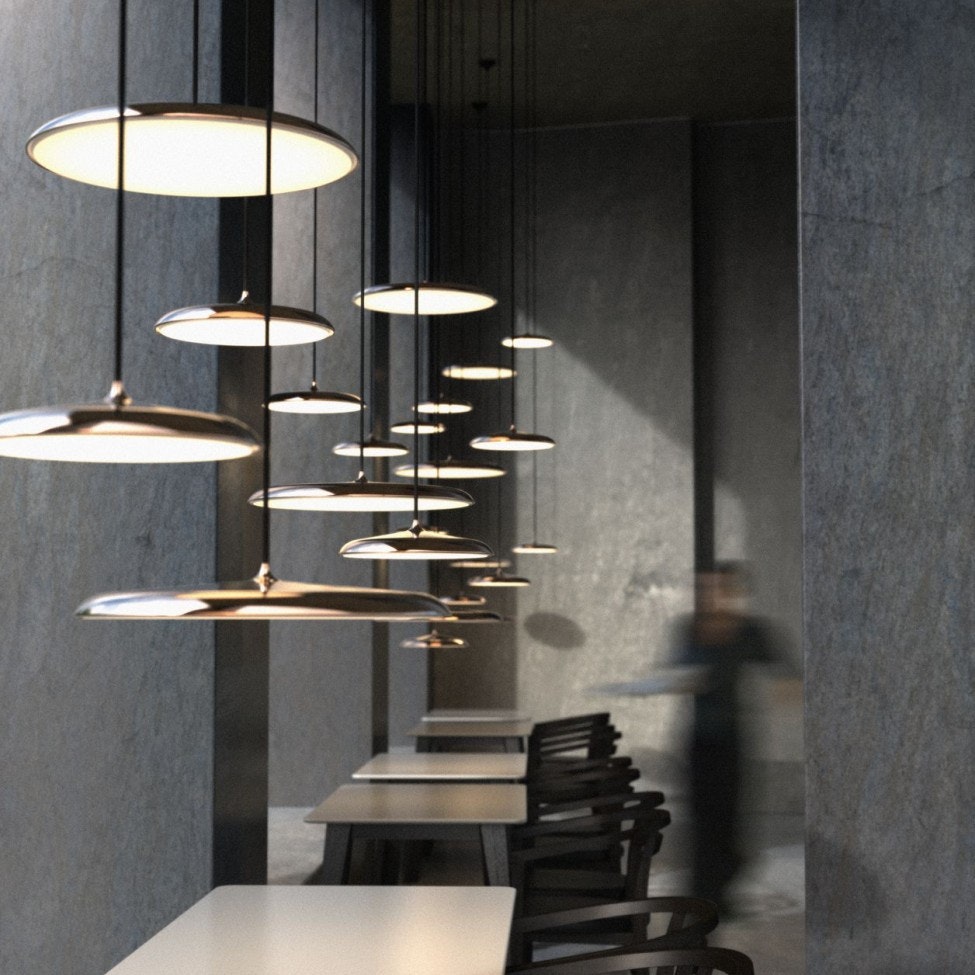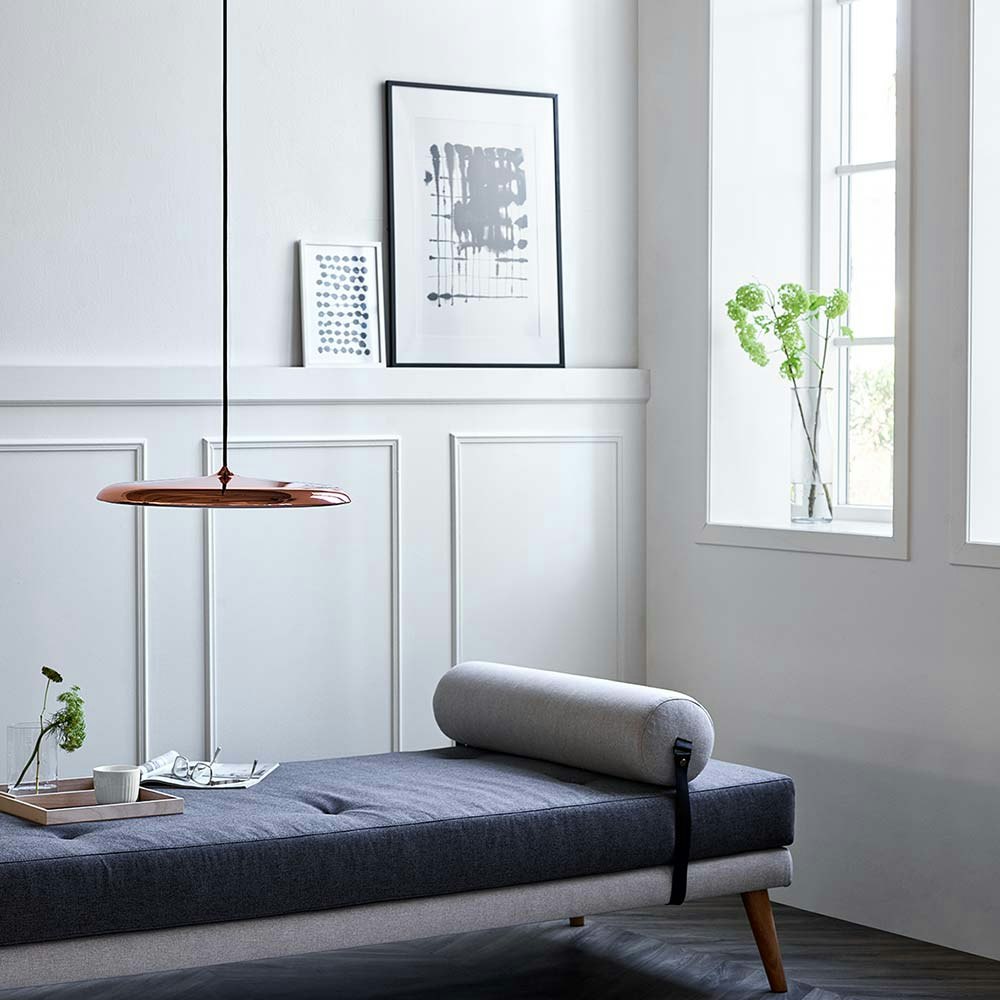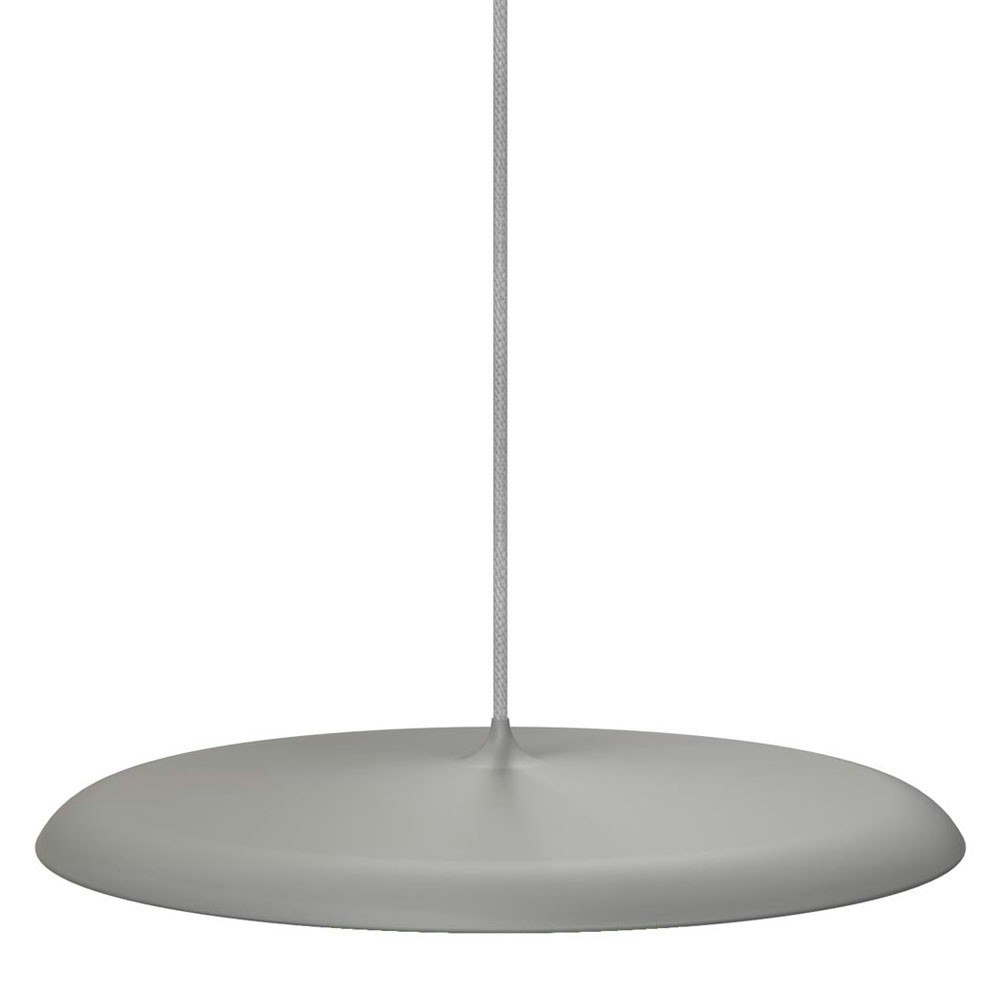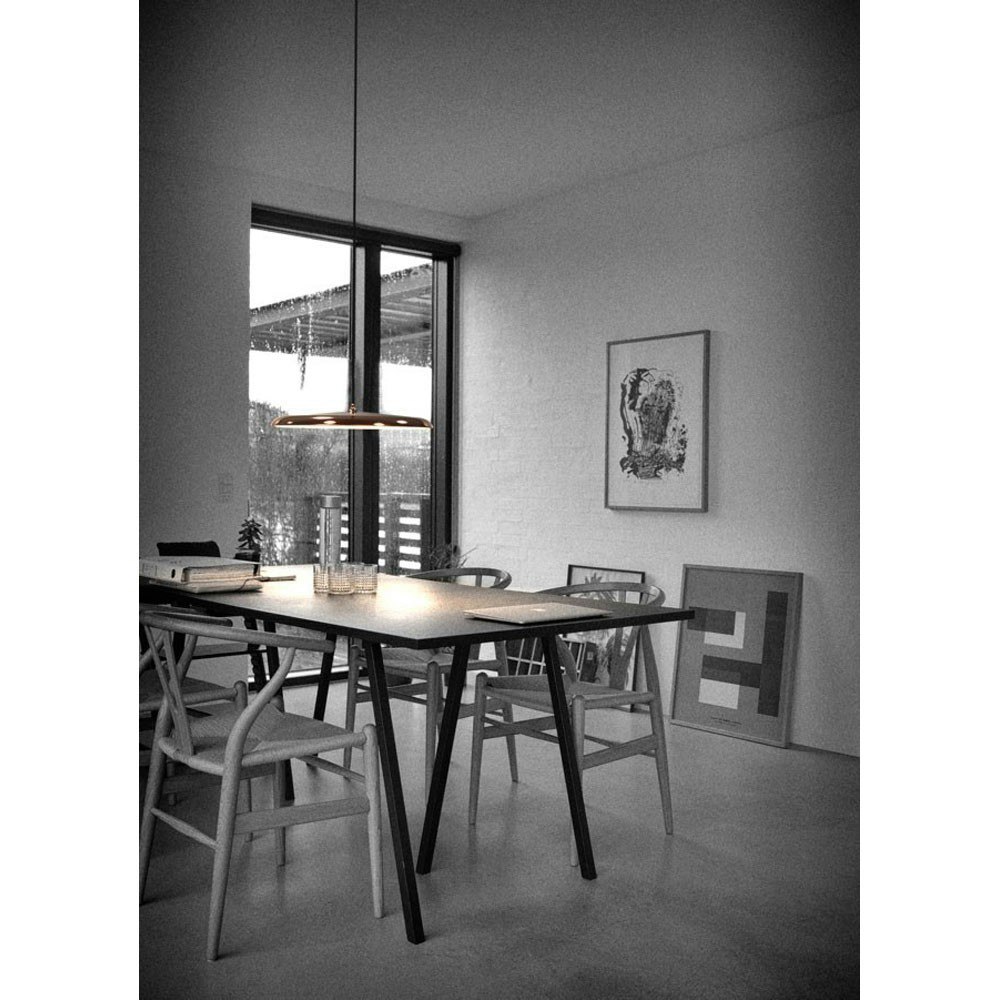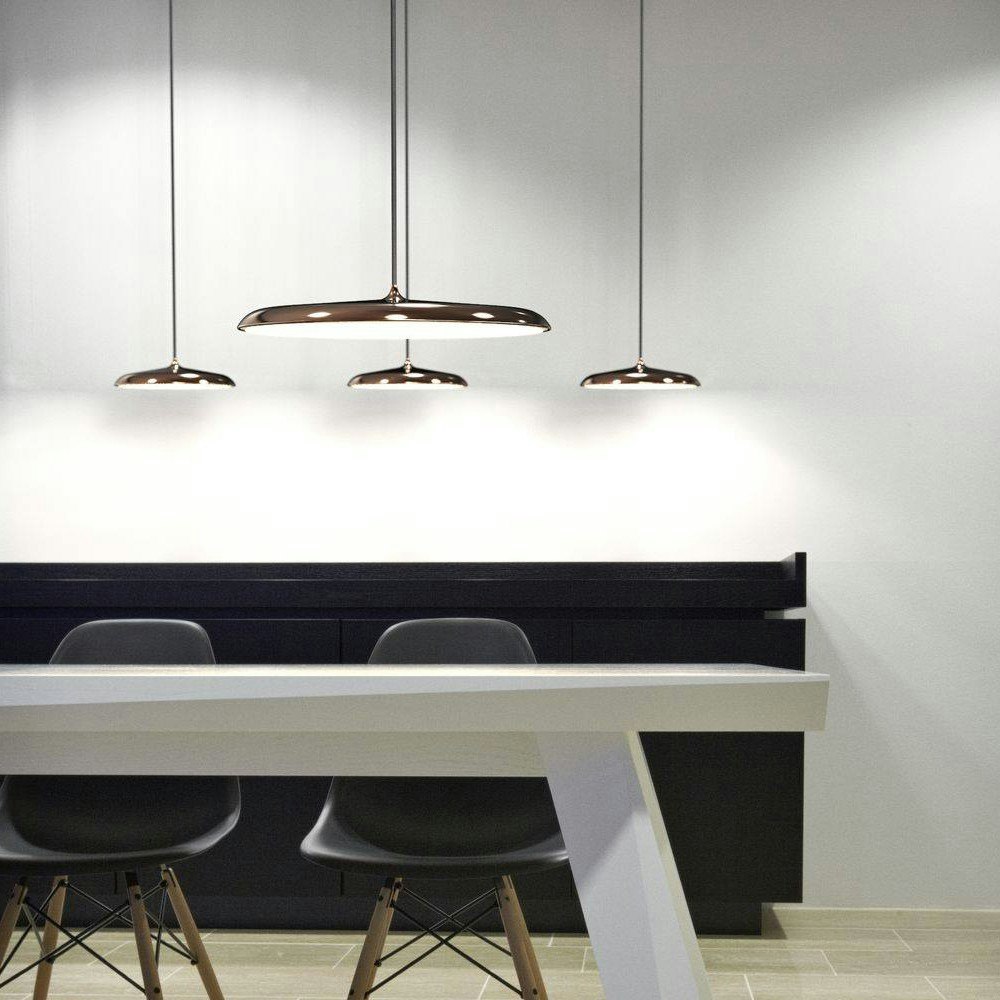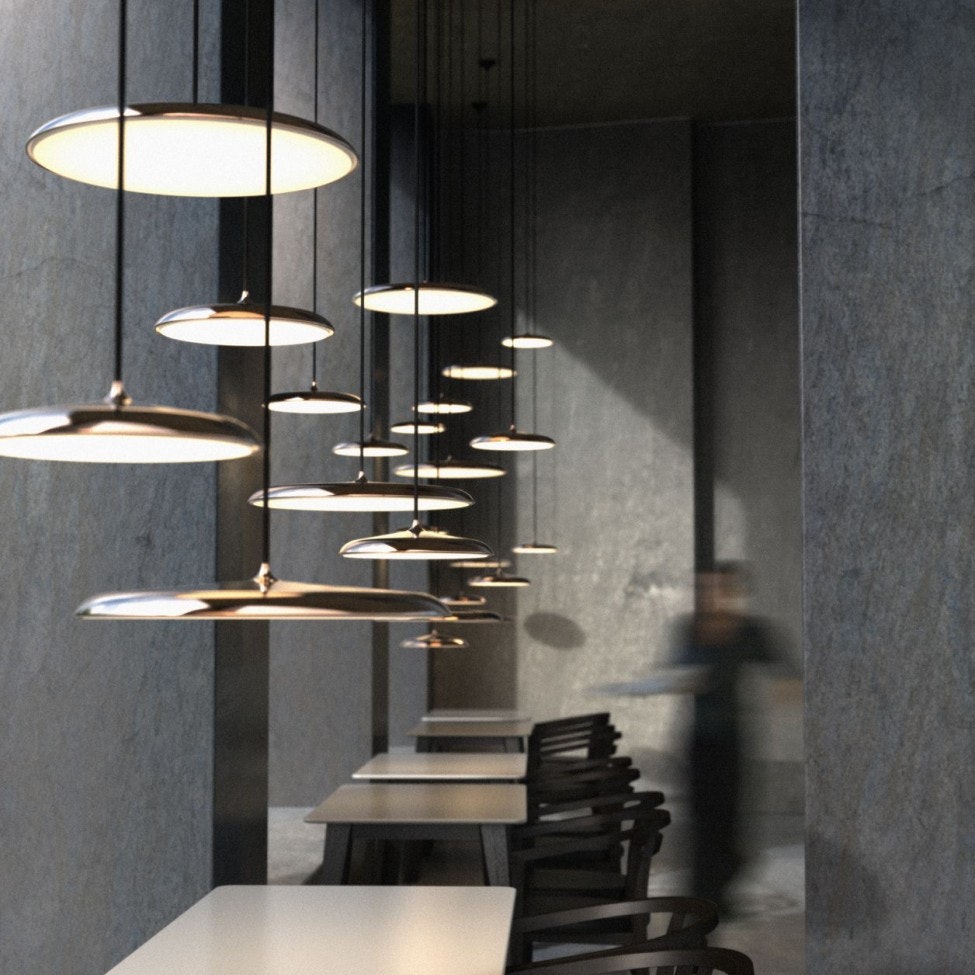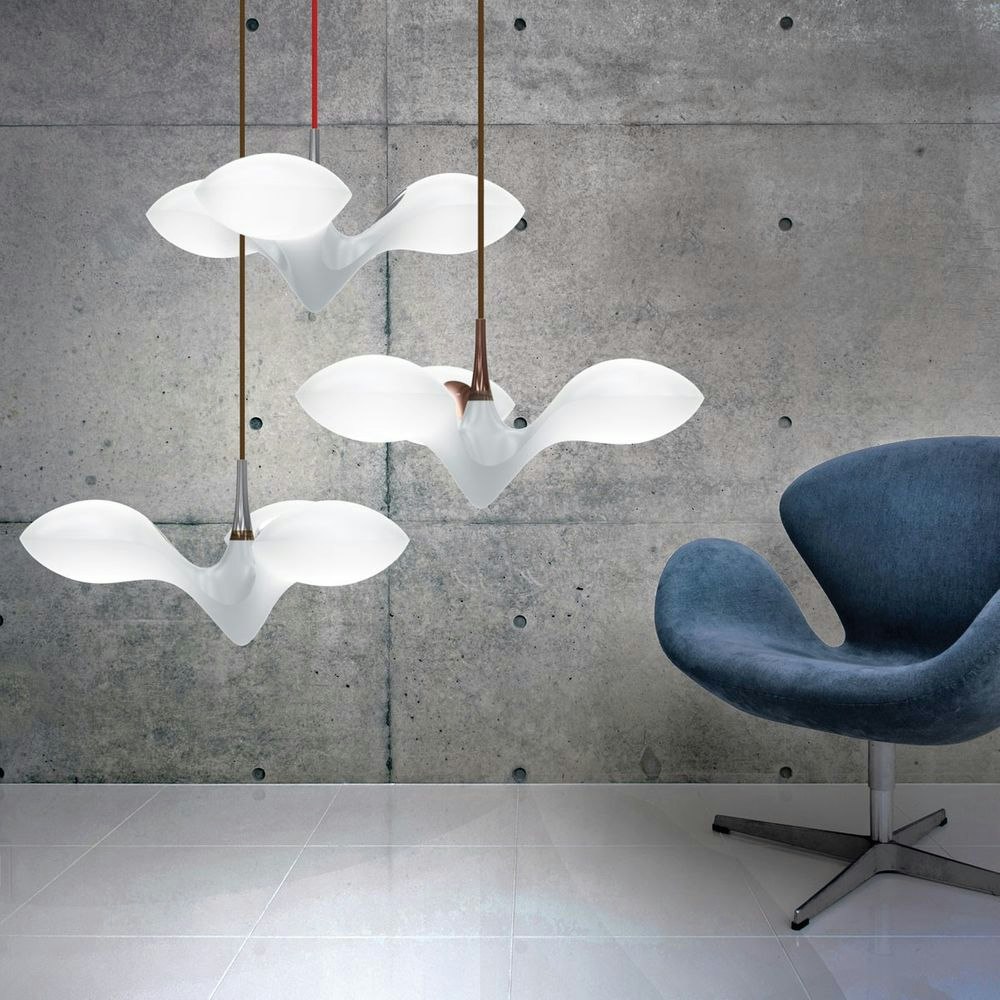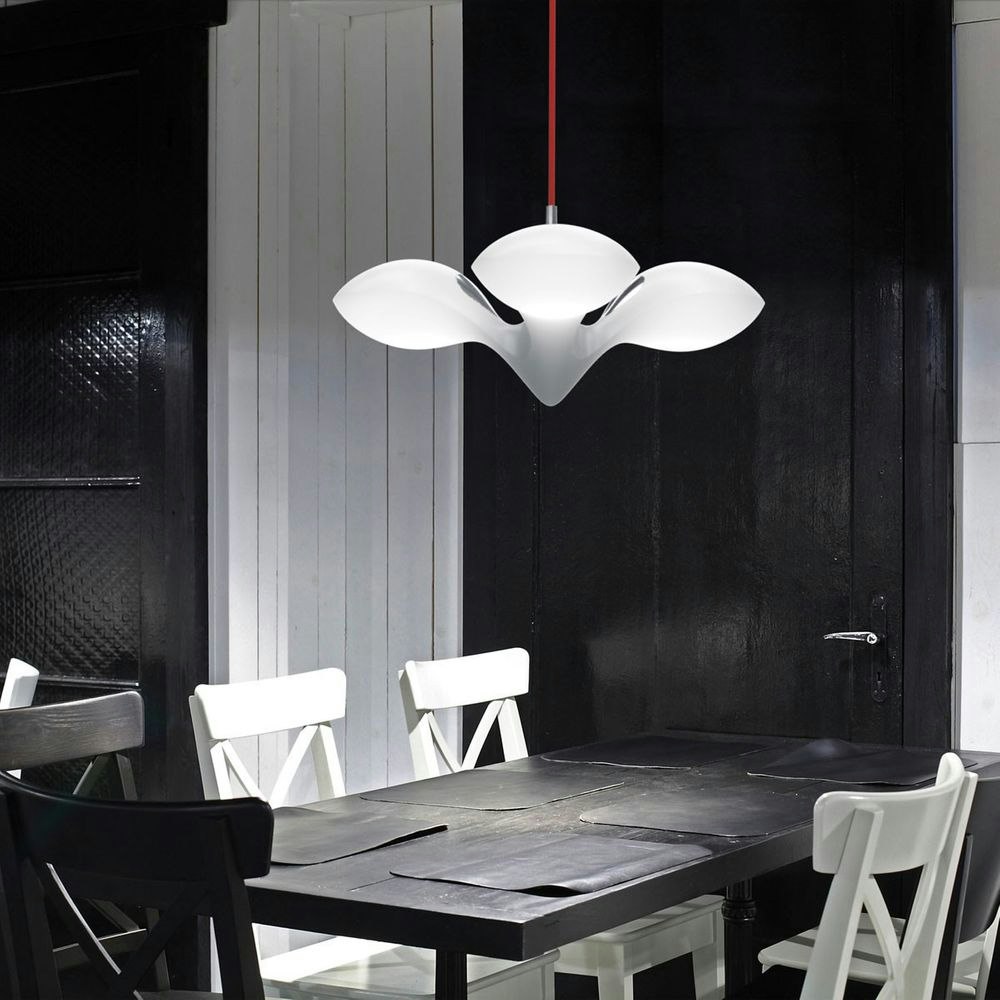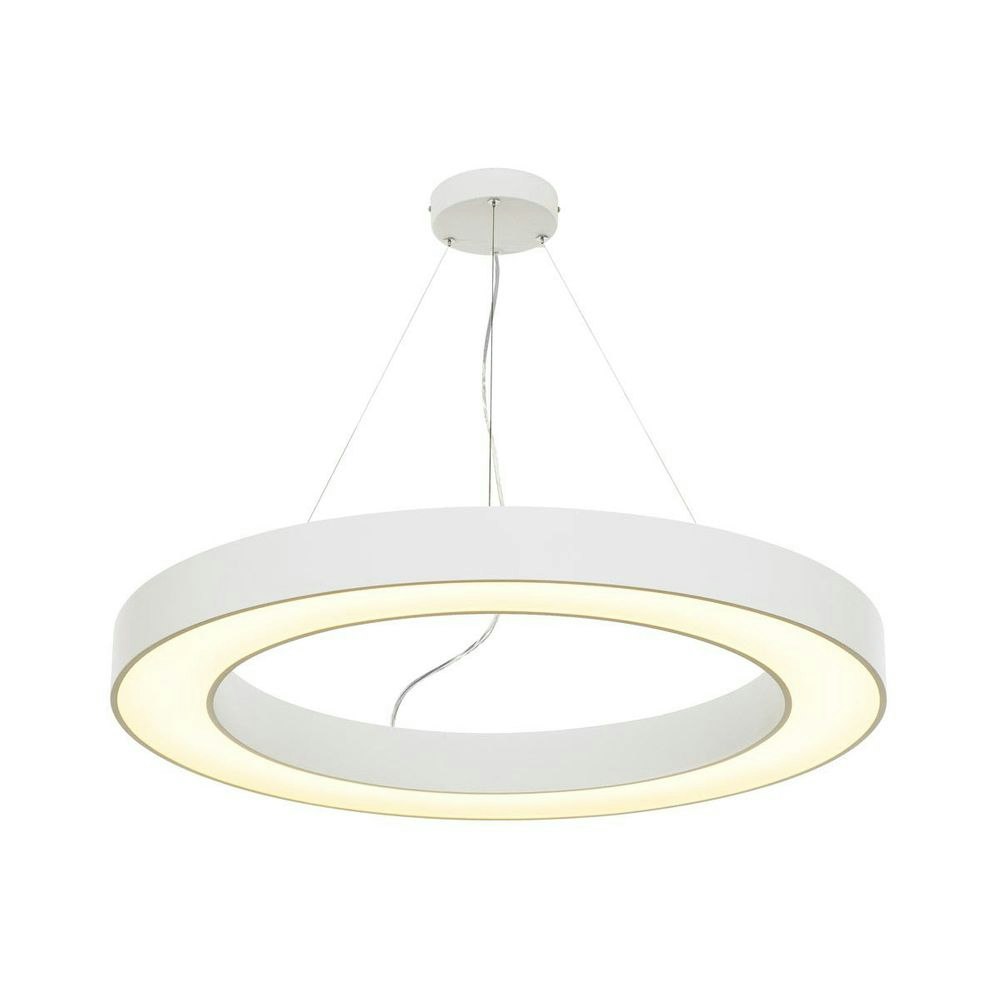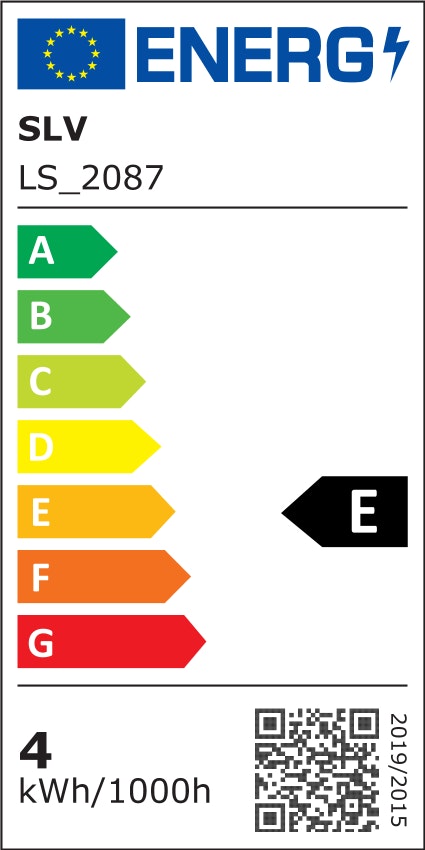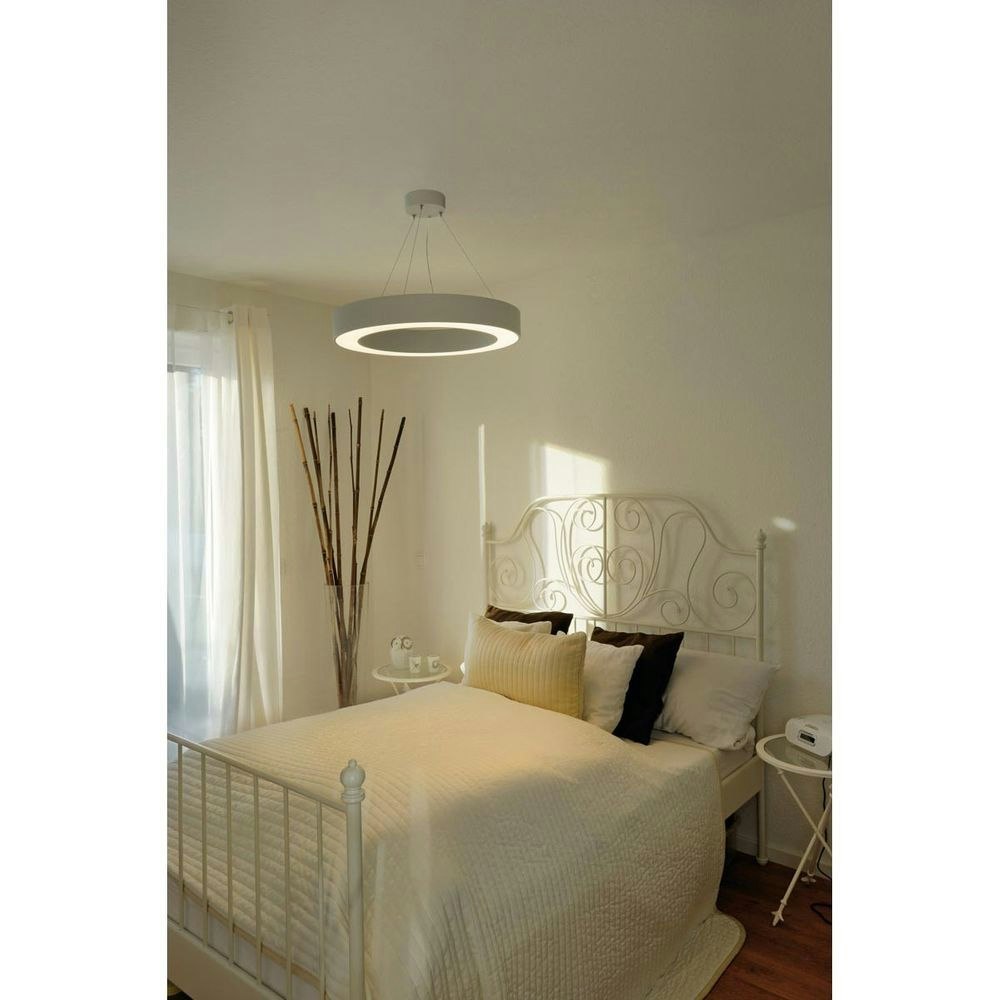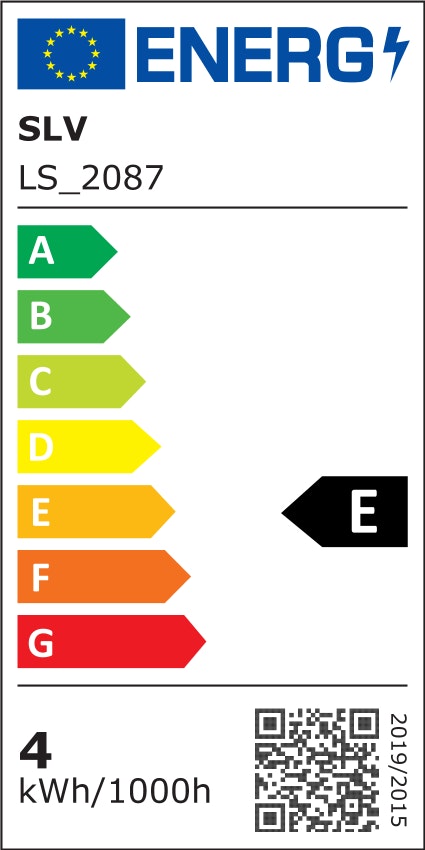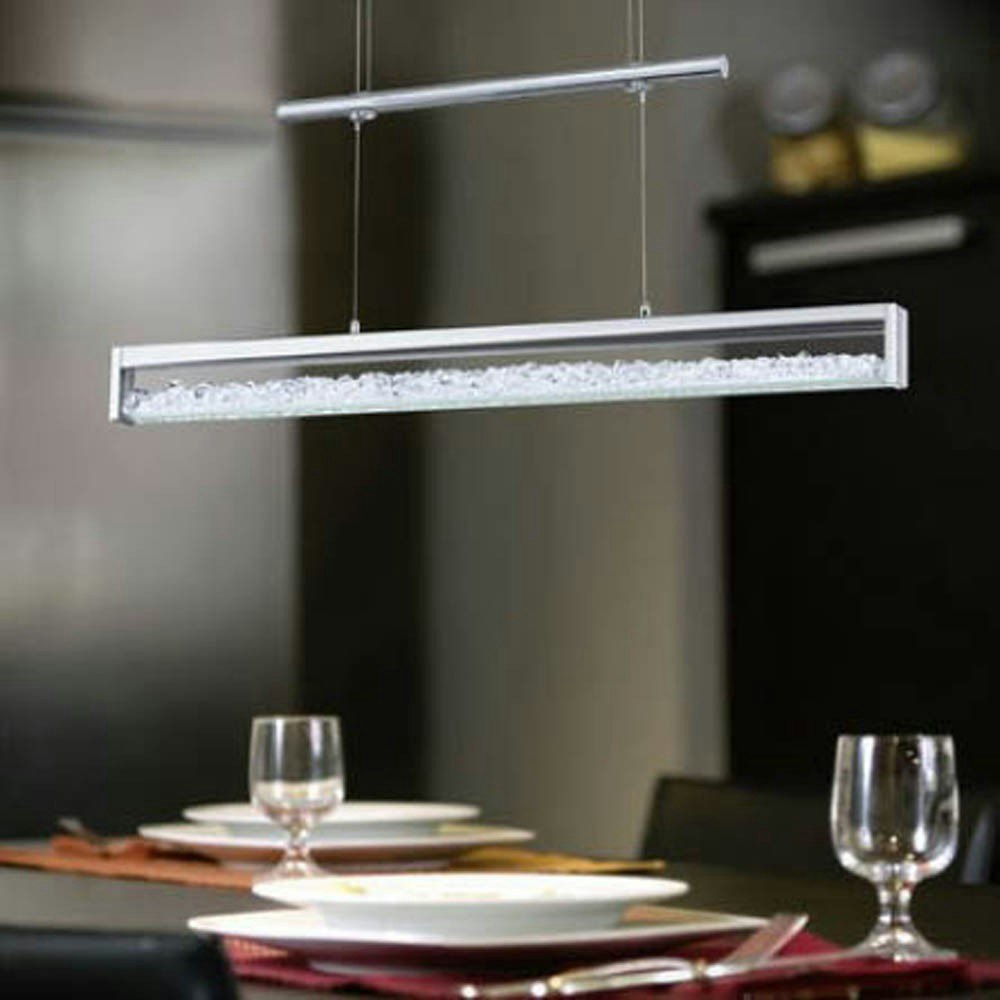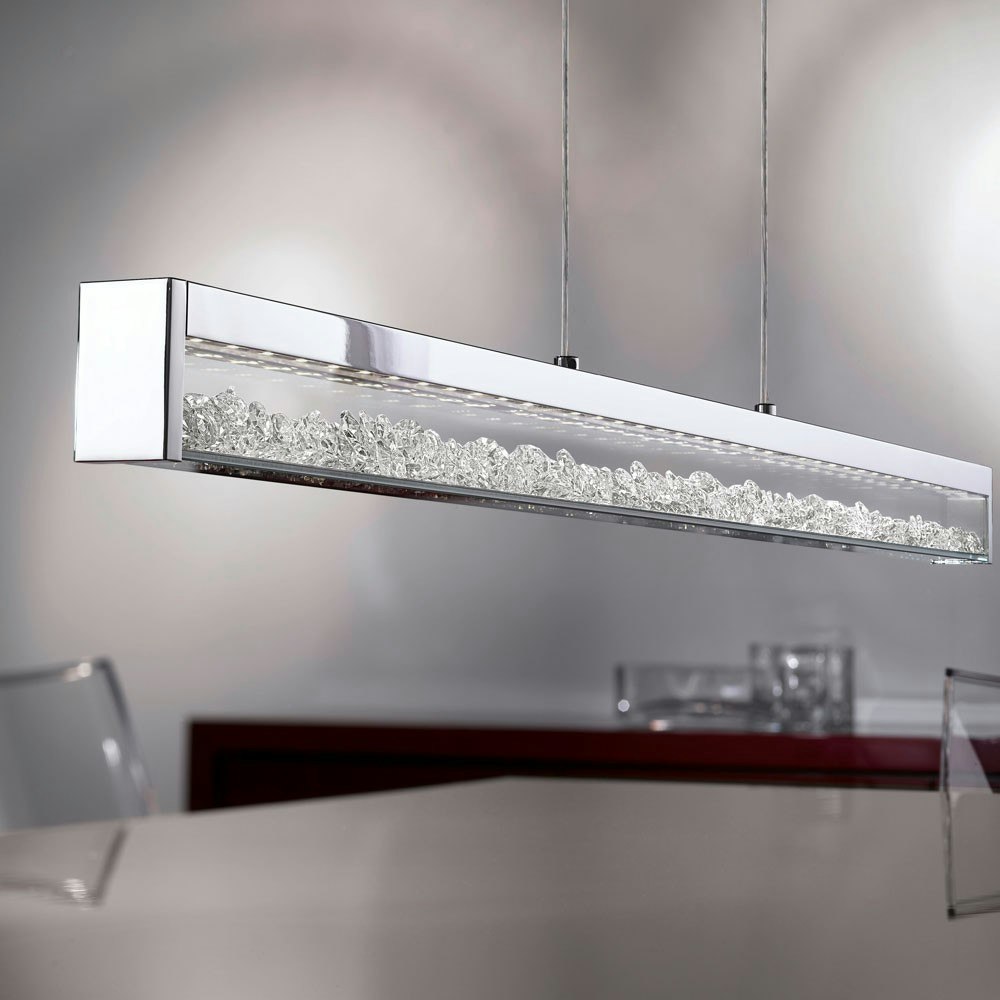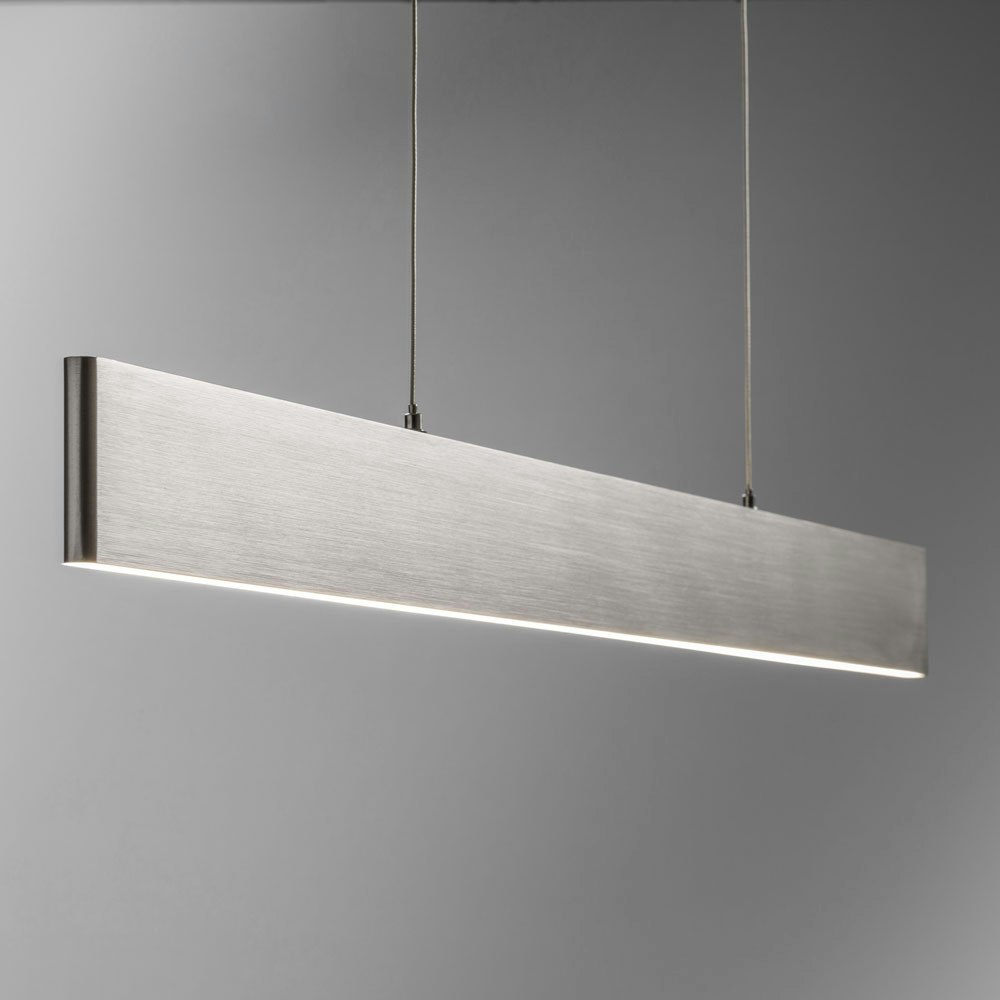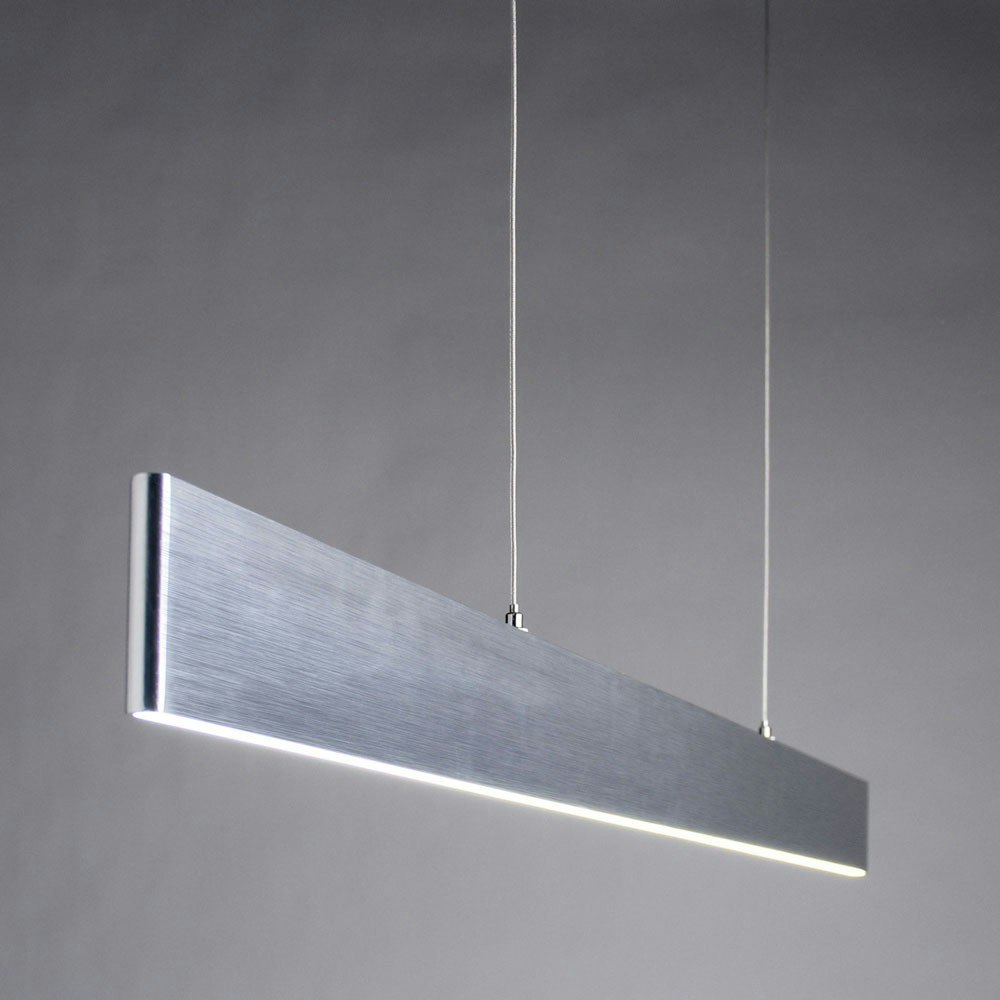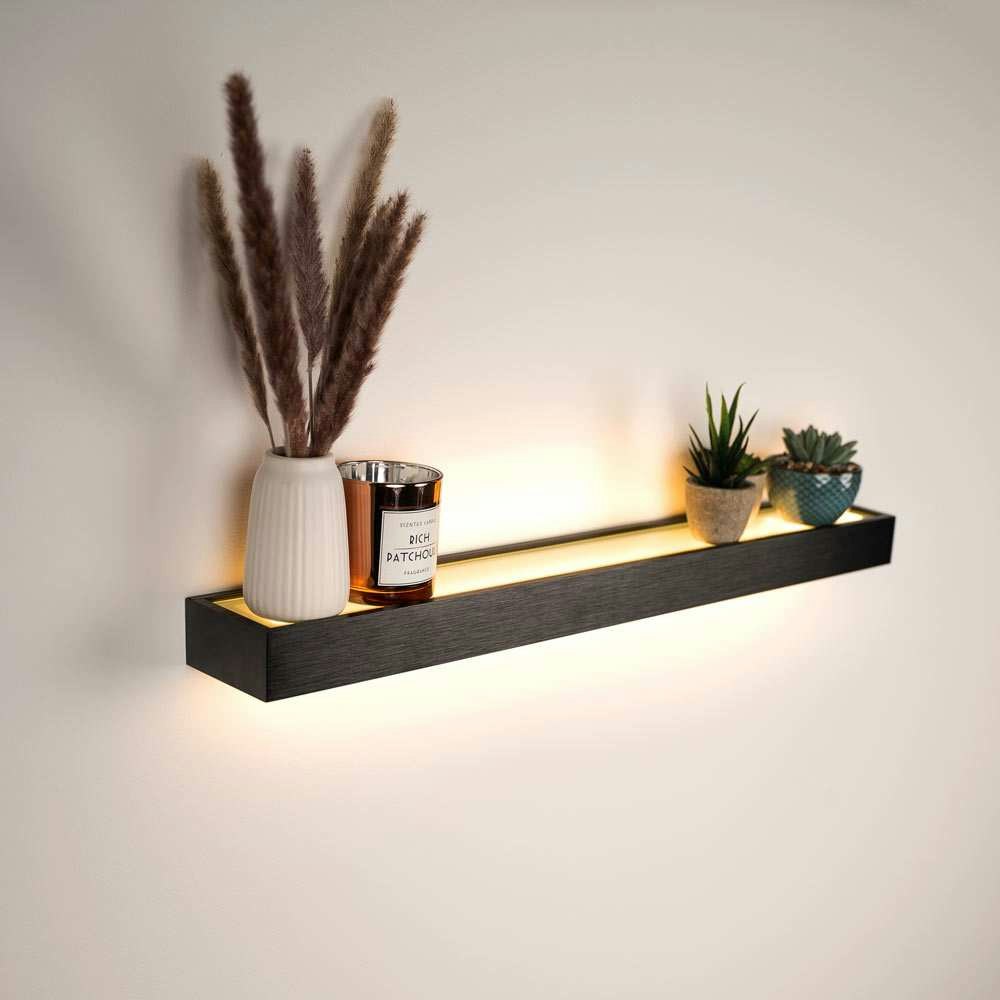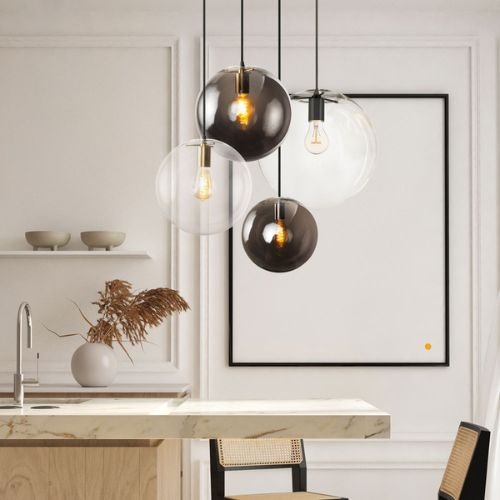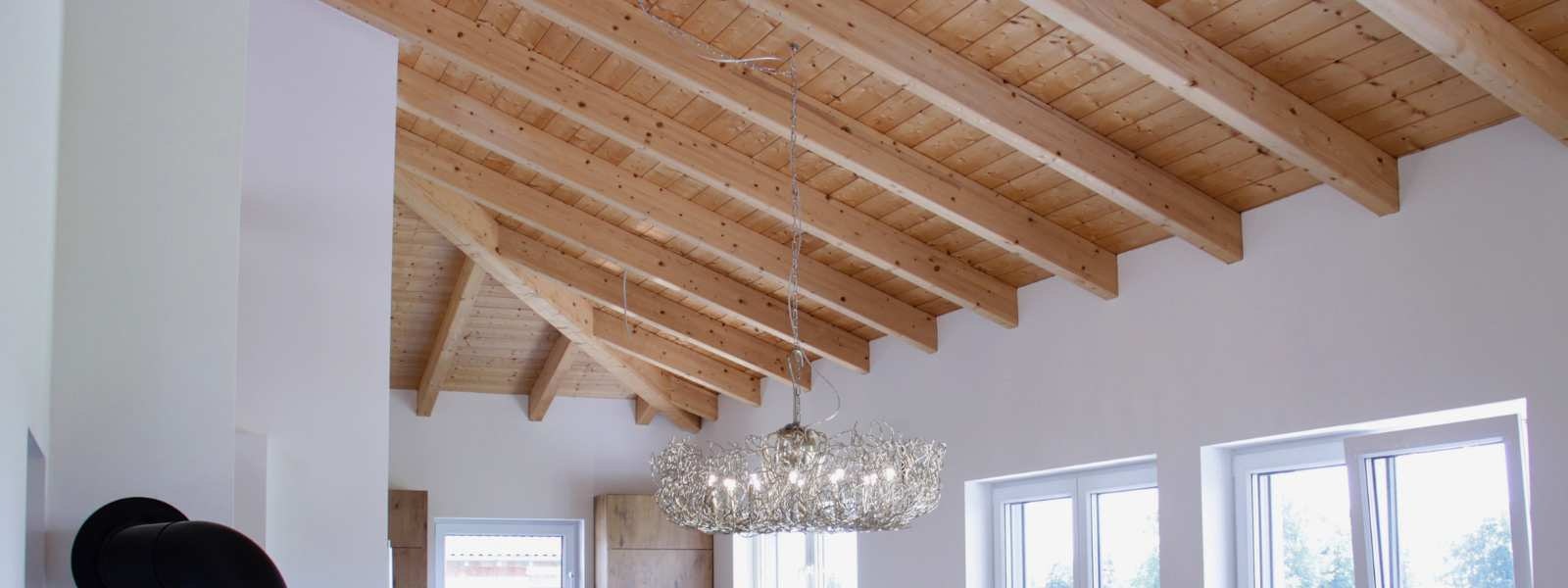
Mounting pendant luminaires on sloping roofs
Suspended luminaires on sloping roofs: The art of perfect mounting
Harmonious interior design relies not only on choosing the right furniture or colour tones. Targeted lighting can transform rooms, set accents and create the right atmosphere. Suspended luminaires, especially gallery luminaires, can play a central role in this. But what if you have a sloping ceiling? Is installation in such cases more complicated or not possible at all?
The good news first: it is definitely possible!
A sloping ceiling is undoubtedly a special challenge, but with the right preparation and the right tools it can be mastered. The key to success here lies in the so-called Canopy. This inconspicuous component, often called a ceiling trim or rosette, is the link between the luminaire and the ceiling. It not only conceals the cables and the mounting device, but also ensures that the luminaire hangs securely.
There are specially designed canopies for sloping ceilings that are equipped with a movable mounting bracket. These allow the pendant or gallery luminaire to hang vertically and straight, even if the ceiling is slanted. An important point to pay attention to is the load-bearing capacity of the ceiling and the canopy, especially when it comes to heavy luminaires.
Preparation meets perfection: What you need to know before assembly
Before you start with the installation, some basic steps should be followed:
- Planning: Determine the exact location for mounting the luminaires. Remember that the luminaire should hang vertically despite the sloping ceiling.
- Switch off the power: Safety first! Make sure that the electricity is switched off before you start the installation.
- Select canopy: Choose a canopy that is compatible with your sloping ceiling.
- Installation: Always follow the manufacturer's instructions. Depending on the nature of the ceiling (concrete, drywall, wood), appropriate plugs and screws must be used.
Mounting the luminaire on sloping ceilings can be challenging, but with a little care and the right tips, it becomes a doable task. Here is more detailed information to help you:
- Plugs and screws: depending on the type of ceiling materials
- Current tester: To check that there really is no current flowing
- Drilling machine: For setting the dowels in the ceiling
- Laser leveller: This is not required, but can be very helpful to ensure that the light is positioned accurately.
Material of the ceiling:
- Stability: Materials such as plasterboard can be less stable than solid wood or concrete. The material will determine what type of fixing or anchors you should use.
- Accessibility: With some materials it can be difficult to lay cables or set fixing points. For example, drilling into concrete ceilings may require special drill bits and dowels.

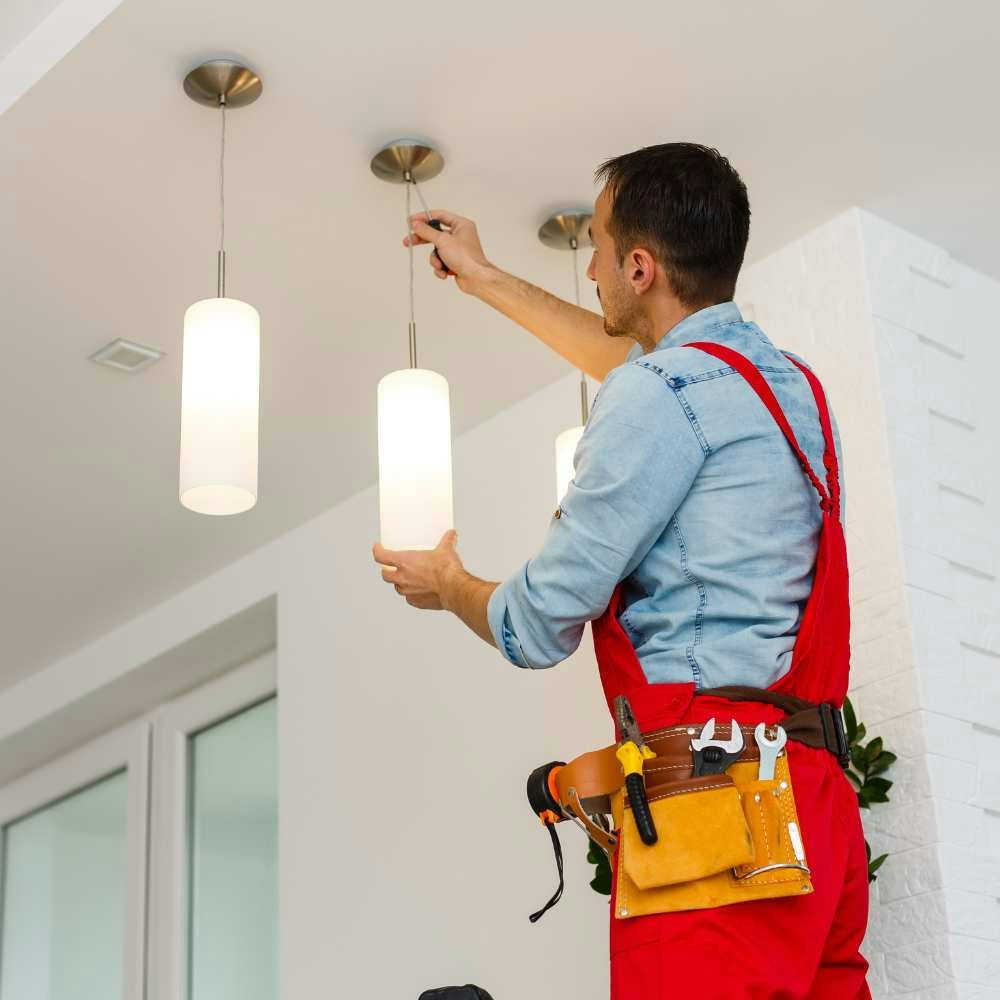
Light shows on sloping ceilings: Secrets of perfect luminaire installation
Degree of slant
- Angle compensation: The degree of slope affects how the luminaire will hang. You may need special canopies or suspension systems to ensure that the luminaire hangs vertically and not parallel to the slope.
- Positioning: The steeper the slope, the more it affects where the luminaire should be optimally placed to achieve the desired lighting effect.
Power outlet
- Position: If the power outlet is not in the desired location for the luminaire, you may need to do additional wiring work. This can be particularly challenging with sloping ceilings as running cables can be complicated.
- Safety: When working with electrical installations, safety is paramount. Make sure the power is off before you start the installation. Use a current tester to make sure there is no voltage on the wires. If you are not sure, consult a professional.
Consider the geometry of the room
The exact position of the lamp depends not only on the electrical wiring but also on the geometry of the room. With sloping ceilings, the illumination is reflected differently than with flat ceilings. It is therefore important to carefully select the best place for the lamp to ensure optimal lighting.
Wiring
Wiring can be more complex with sloped ceilings, especially if there are no existing outlets or outlets. In such cases, it may be necessary to run the cables through the ceiling, especially if it is made of drywall or similar materials.
Safety aspects
It is absolutely essential to ensure that the ceiling and canopy can safely support the weight of the lamp. Sloping ceilings can sometimes be less stable than horizontal ceilings, especially if they are made of drywall or similar materials.
Professional help
Although many do-it-yourselfers are capable of installing lamps themselves, in some cases it may be wise to enlist professional help. An electrician or handyman can not only ensure that the lamps are installed safely and correctly, but also provide valuable tips on the best positioning and alignment.
Final thought
Gallery & pendant lights can make all the difference to the character of a room, and sloping ceilings should not be an obstacle to your installation. With the right tools, materials and careful planning, even sloping ceilings can shine in a wonderful light.
The perfect canopy for sloping ceilings: a guide to selection
Choosing canopies for sloping ceilings andwhat to look for
Canopies are essential components when installing pendant & gallery luminaires, especially when it comes to sloping ceilings. They conceal the electrical wiring and provide a visually appealing base for the luminaire, and are also crucial in ensuring that the luminaire hangs correctly and securely.
- Material and weight: The material of the canopy should be robust enough to support the weight of the luminaire. Metal canopies, e.g. made of brass or stainless steel, are often more stable than plastic versions. The weight of the canopy itself should also be considered, especially in combination with the weight of the luminaires.
- Size and shape: The canopy should match the size and shape of the luminaire. A canopy that is too small may not be able to support the weight of the luminaire or may not look visually appealing. The shape is equally crucial, especially when it comes to how the canopy should fit into the overall look of the room.
- Installation mechanism: Some canopies are easier to install than others. Look for models that allow for easy and secure installation, e.g. with snap or screw mechanisms.
- Colour and design: Depending on the interior design and the colours in the room, the canopy should harmonise visually. Some prefer subtle, unobtrusive colours, while others may be looking for an eye-catching design that serves as an additional accent.
- Price and quality: As with most products, canopies come in different price categories. However, it is advisable not to go by price alone. A high-quality canopy that may cost a little more often offers a longer life and better functionality.
- Rating and recommendations: It can be helpful to read customer reviews or ask for recommendations from specialist luminaires. These can provide valuable insight into the actual functionality and quality of the canopy.
From the idea to the magic of light: Artful staging with gallery & pendant luminaires
Installing gallery & pendant luminaires
When selecting and installing gallery & pendant luminaires, there are several aspects to consider to ensure that they look their best, are safe and serve their purpose.
Here are some important points to consider when working with these lights:
- Size and proportion: the luminaire should be in proportion to the room and the furniture in it. A luminaire that is too large can look overwhelming in a small room, while a luminaire that is too small can look lost in a large room.
- Height of suspension: Consider how low the luminaire should hang. This often depends on the purpose of the luminaire. Above a dining table it can hang lower, while in a passageway it should hang higher so as not to get in anyone's way.
- Light output and lamp type: Consider what kind of light you want the luminaire to give off. Should it be a warm, inviting light for your living room or a bright, functional light for a kitchen? The choice of light source(LED, halogen, light bulb) also plays a major role.
- Design and style: The luminaire should fit harmoniously into the style of the room, be it modern, classic, rustic or another design direction.
- Adjustability: Some pendant lights offer the possibility to adjust the height after installation. This can be especially useful if you want to rearrange the room or if the function of the room changes.
- Safety: The luminaire and its suspension should be able to safely support the weight of the luminaire. Also, make sure that the electrical connections are safe and comply with local regulations.
- Energy efficiency: Consider whether the luminaire is compatible with energy-efficient light sources such as LEDs. These can save energy and money in the long run.
- Care and maintenance: Some luminaires can be more difficult to clean or maintain than others, depending on the design and material. Take this into account when making your decision, especially if the luminaire will be installed in an area that requires regular cleaning.
- Cost: Set a budget and try to stay within it. However, price should not be the only consideration; quality and durability are also important factors.
Additional tips for mounting gallery & pendant luminaires on sloping ceilings
Advice: If you are unsure, consult a professional. Electricians, interior designers or lighting consultants can offer valuable insight and advice on mounting luminaires on sloping ceilings.
Measurements: Always measure carefully before drilling holes or making installations. Proper measurement helps avoid mistakes and ensures that the luminaire is placed exactly where you want it.
Weight calculator: Before you start mounting, use the weight calculator for pendant lights and ceilings. This useful tool will help you determine the maximum weight of your ceiling and ensure that your pendant light hangs safely and stably. A correct understanding of the weight can avoid complications later on and provide additional safety in your home.


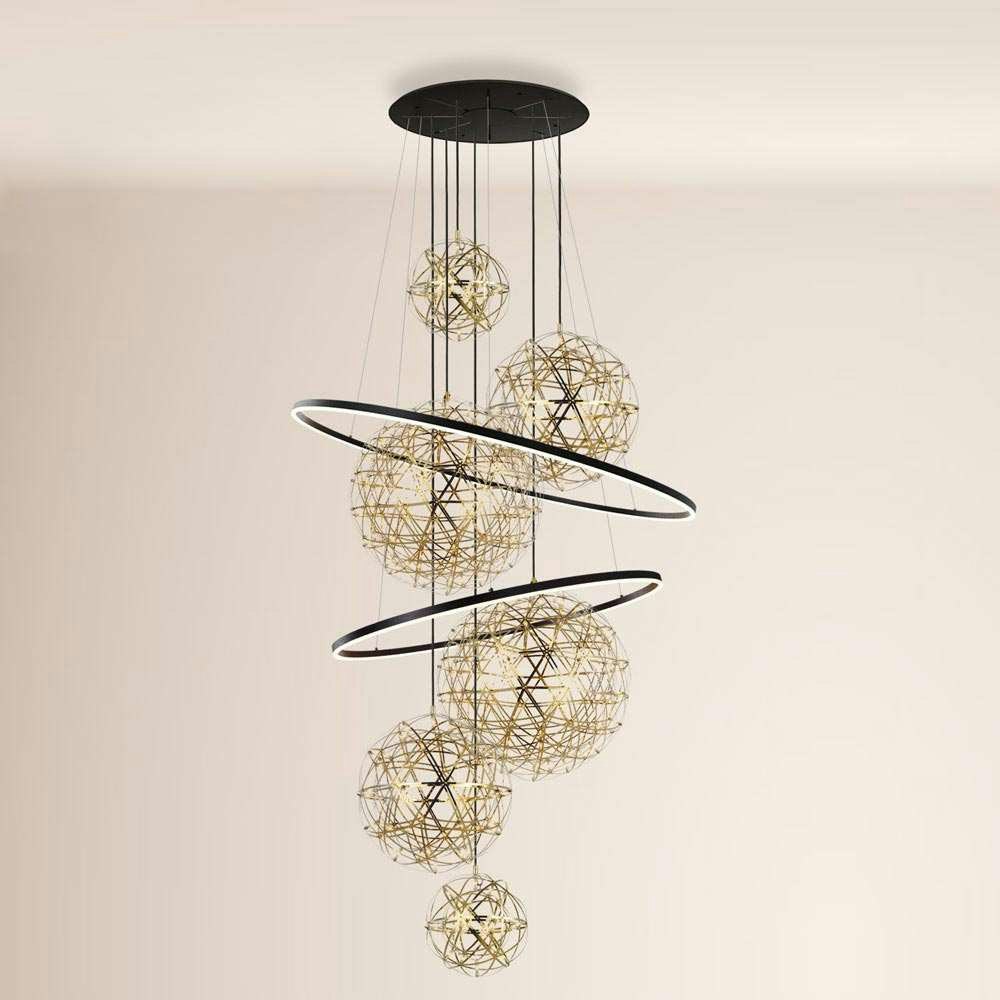
Conclusion - This is how you do everything right!
In summary, sloping ceilings need not be an obstacle to installing gallery & pendant luminaires. With the right canopy, a little preparation and, if necessary, professional support, any room, regardless of its ceiling geometry, can be put in the right light.
If you are still undecided about how you want to implement lighting in your home, why not make an appointment with the lighting planners at Skapetze for a personal consultation and the development of an individual lighting concept ?
You are also welcome to visit us on site in Simbach am Inn at , Bavaria's largest lighting studio .
If you already have a concrete idea of how the luminaires should look in your home, we can help you turn this idea into reality - our in-house workshop makes it possible.












